Part 4: Masai Mara National Reserve
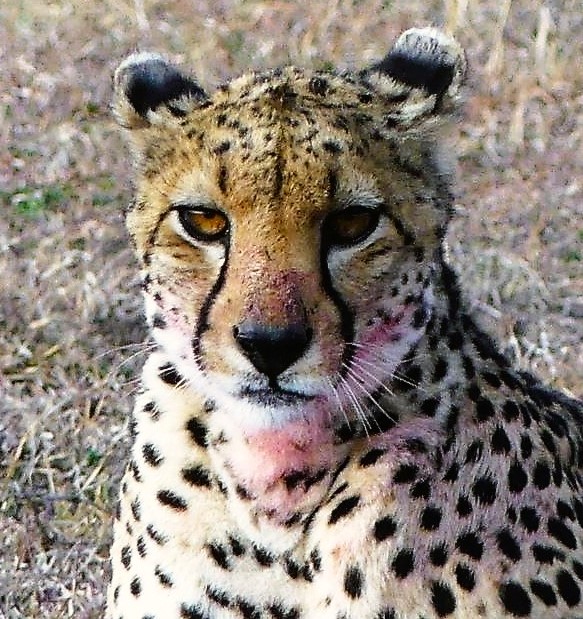
I’m going out with a bang and saving the best for last … the fabulous, final safari days spent in the magnificent Masai Mara National Reserve in SW Kenya. It’s located 150 miles west of Nairobi, and straddles the Tanzanian border; stretching for an astounding 580 square miles (think Greater London or Houston in size comparison). It’s ground zero for the famous Great Migration of immense herds of wildebeests and zebras.
The Masai Mara is considered the “World Cup of Wildlife Viewing.” Without a doubt, it would prove to be the motherlode for animal sightings. In just one day alone, I wrote down a long list of them so as not to forget the incredible wildlife seen. “The Big Five” and then some …
CHEETAHS!
I’d add the Cheetah to the magnificent quintet, “The Big Five.” What a glorious creature. I was anxious to come across them, and we were fortunate to have several sightings of this solitary, sleek and gorgeous cat, fastest of all land animals (60-75 mph).
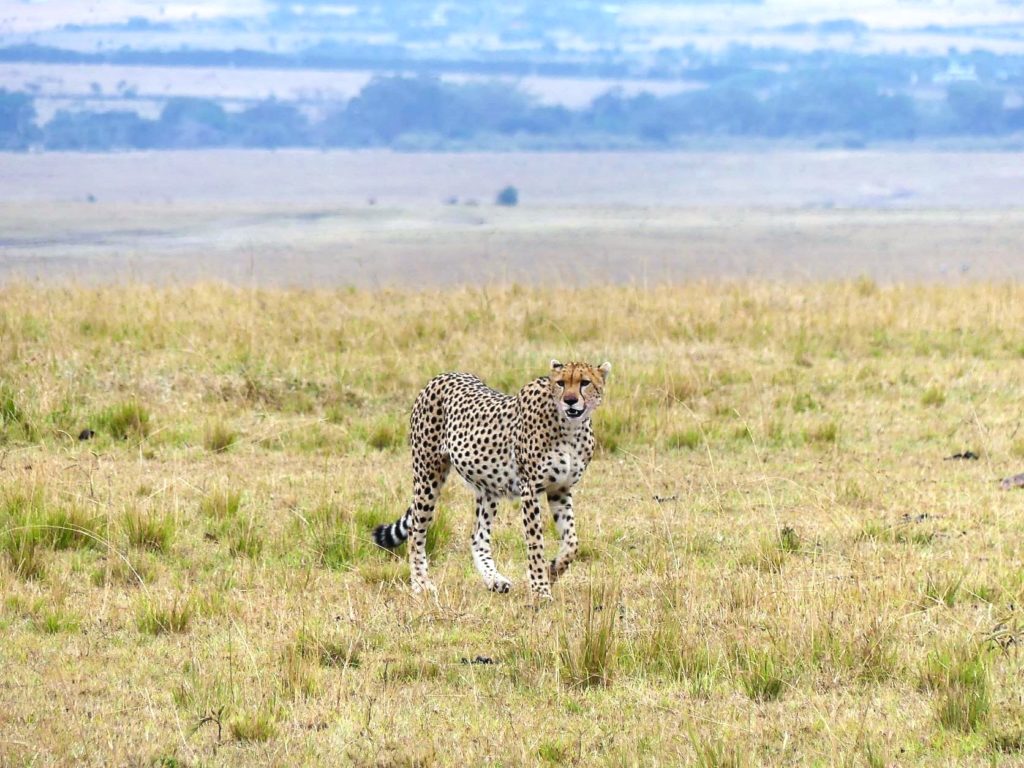
A kill at first sight … it was early morning, and a Spotted Hyena suddenly appeared on our right side, seemingly from out of nowhere, but we found out that they can smell fresh blood from five miles away. It was traveling on a scent as it rounded behind us. Suddenly, it started trotting, picking up speed as it rushed towards a cheetah that was quickly devouring its breakfast a bit off in the distance. Quick is the catchword.
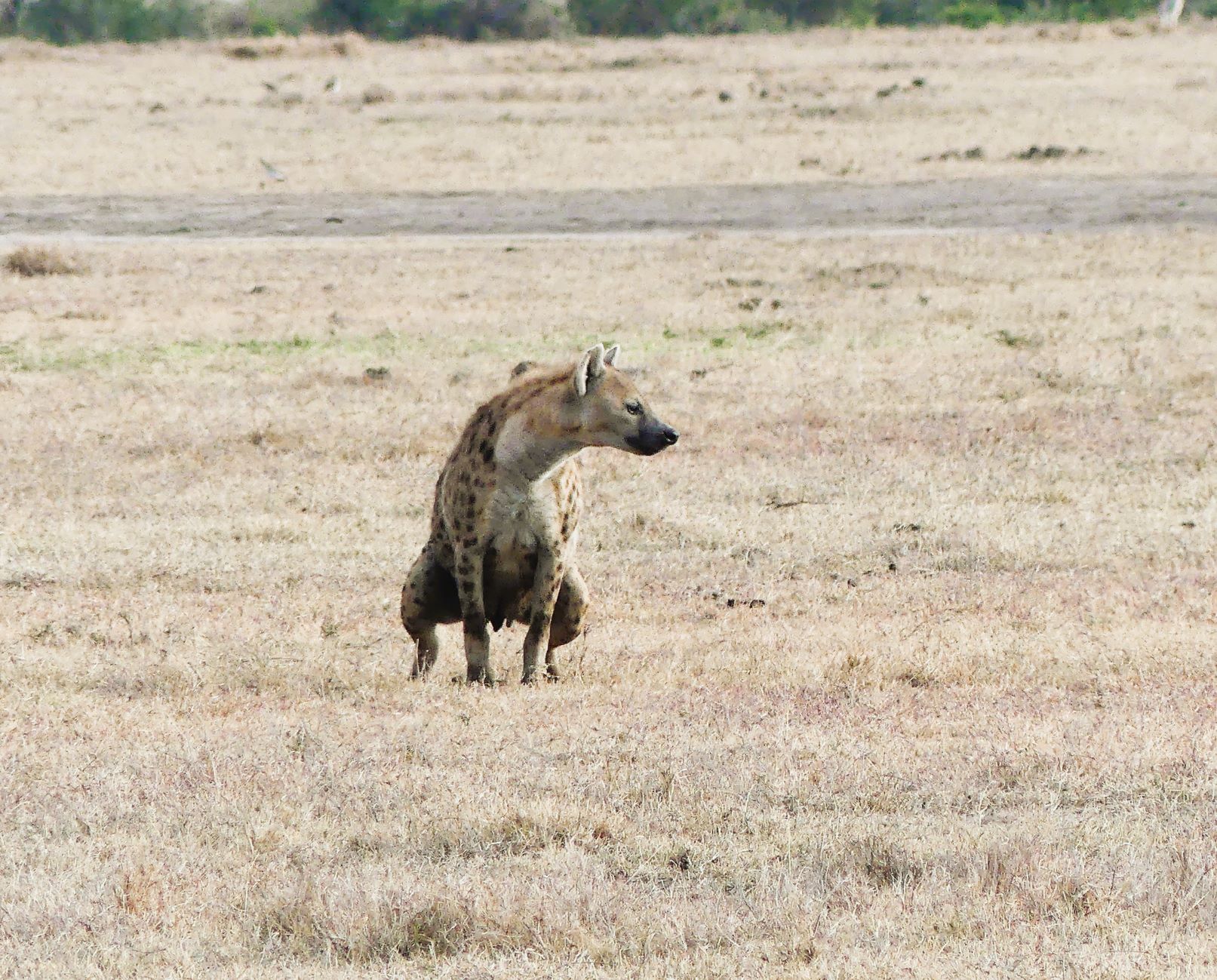
From just a couple of yards away, the cheetah snarled and then quickly ran off … it had no chance with a hyena’s jaws of death and most powerful of bites in the world. The hyena successfully scavenged the cheetah’s kill, finishing off every last morsel of the Thomson Gazelle. Nothing but tiny scraps remained. Camera close-ups revealed a blood-stained cat happily cleaning itself up afterwards. Both animals triumphed.
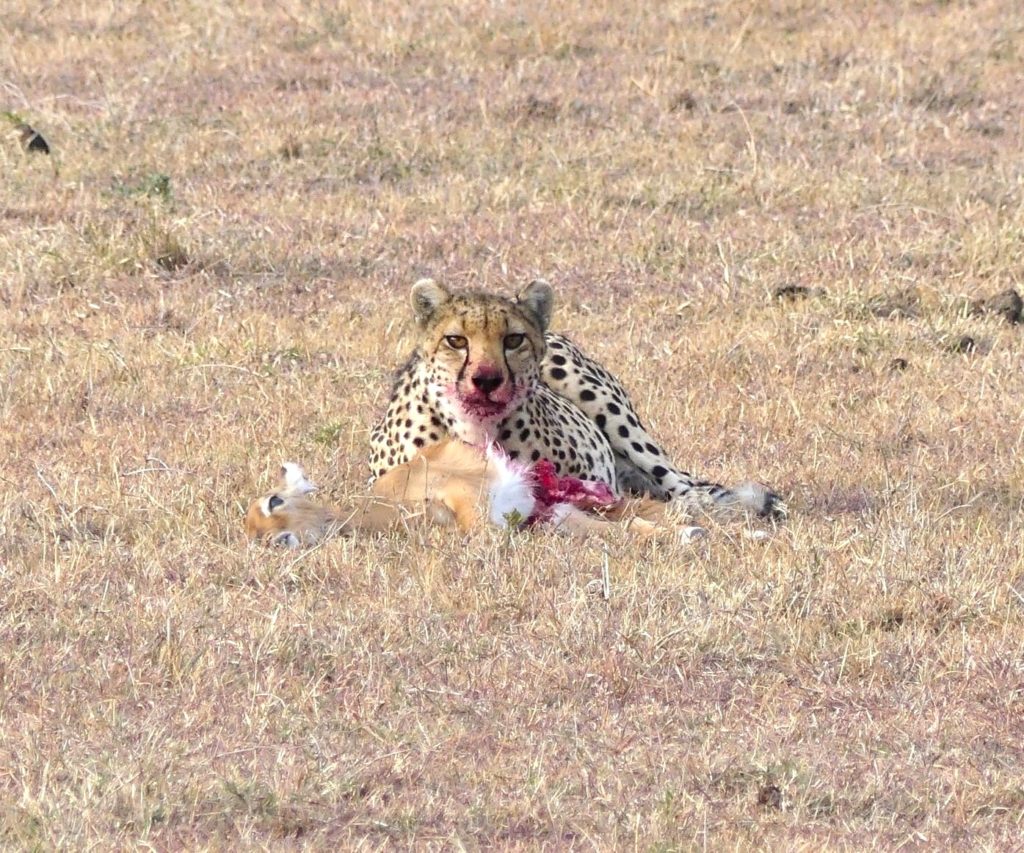

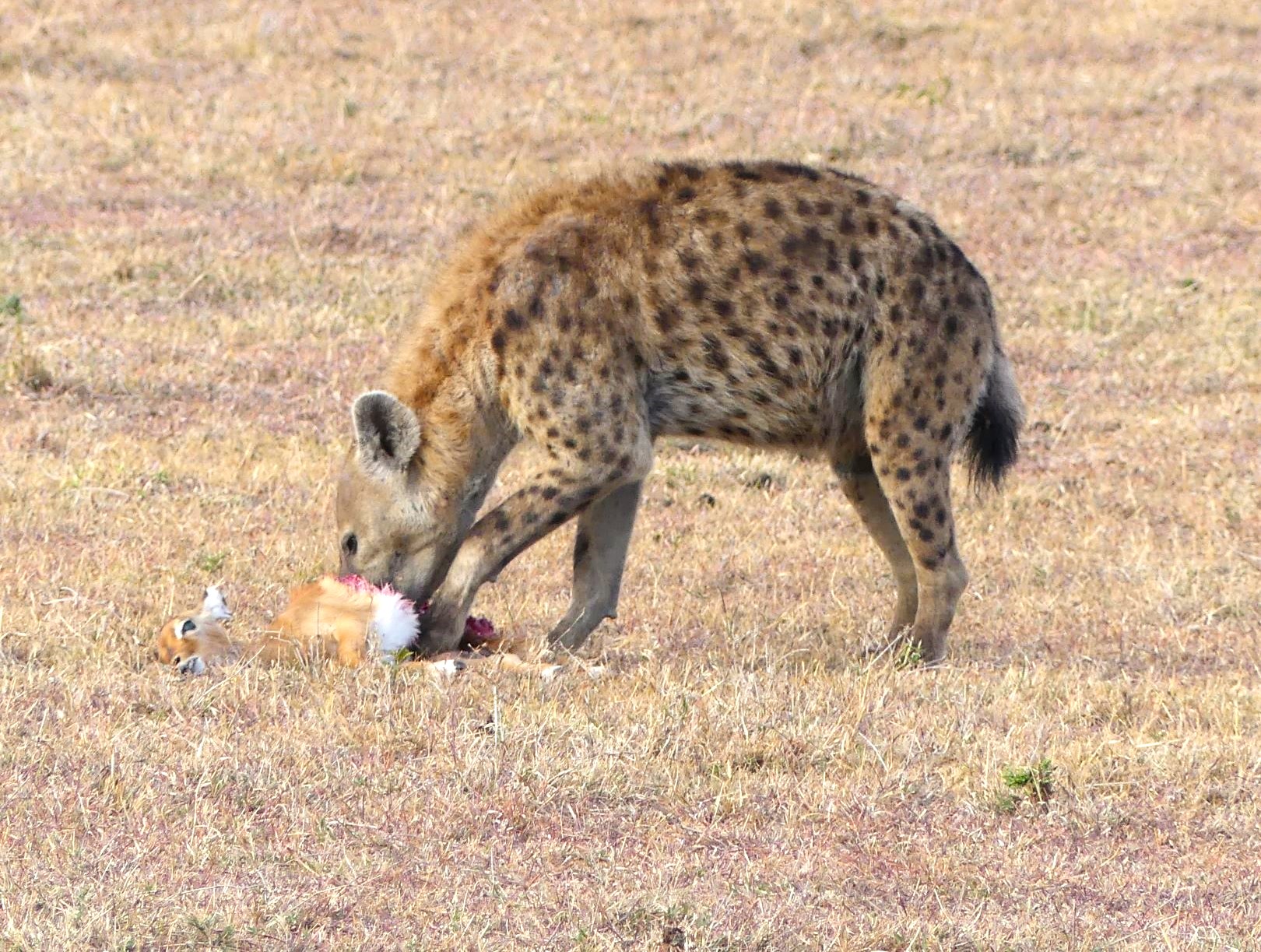
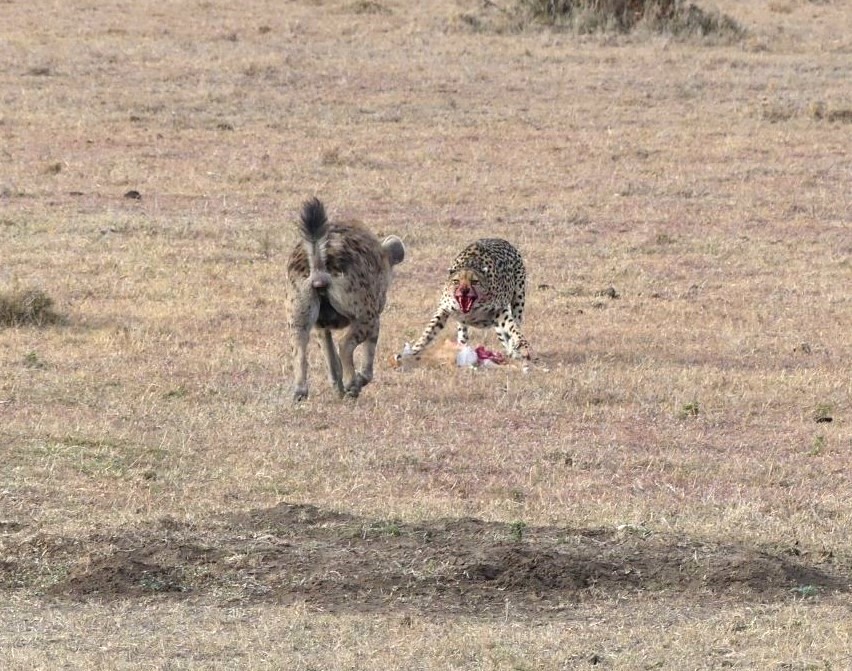
Another vivid impression I have is of a cheetah slowly walking just several yards away and “chirping” for its family. It was an unusual, low sound that I was able to capture on a video. A big WOW! moment to relish forever.
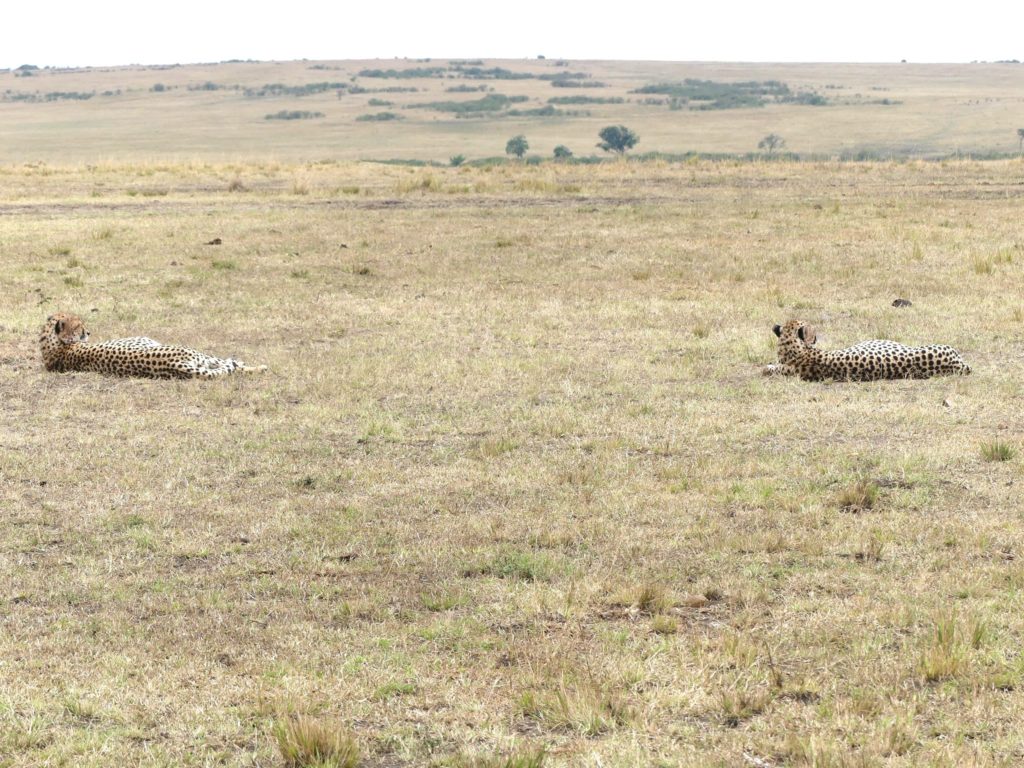

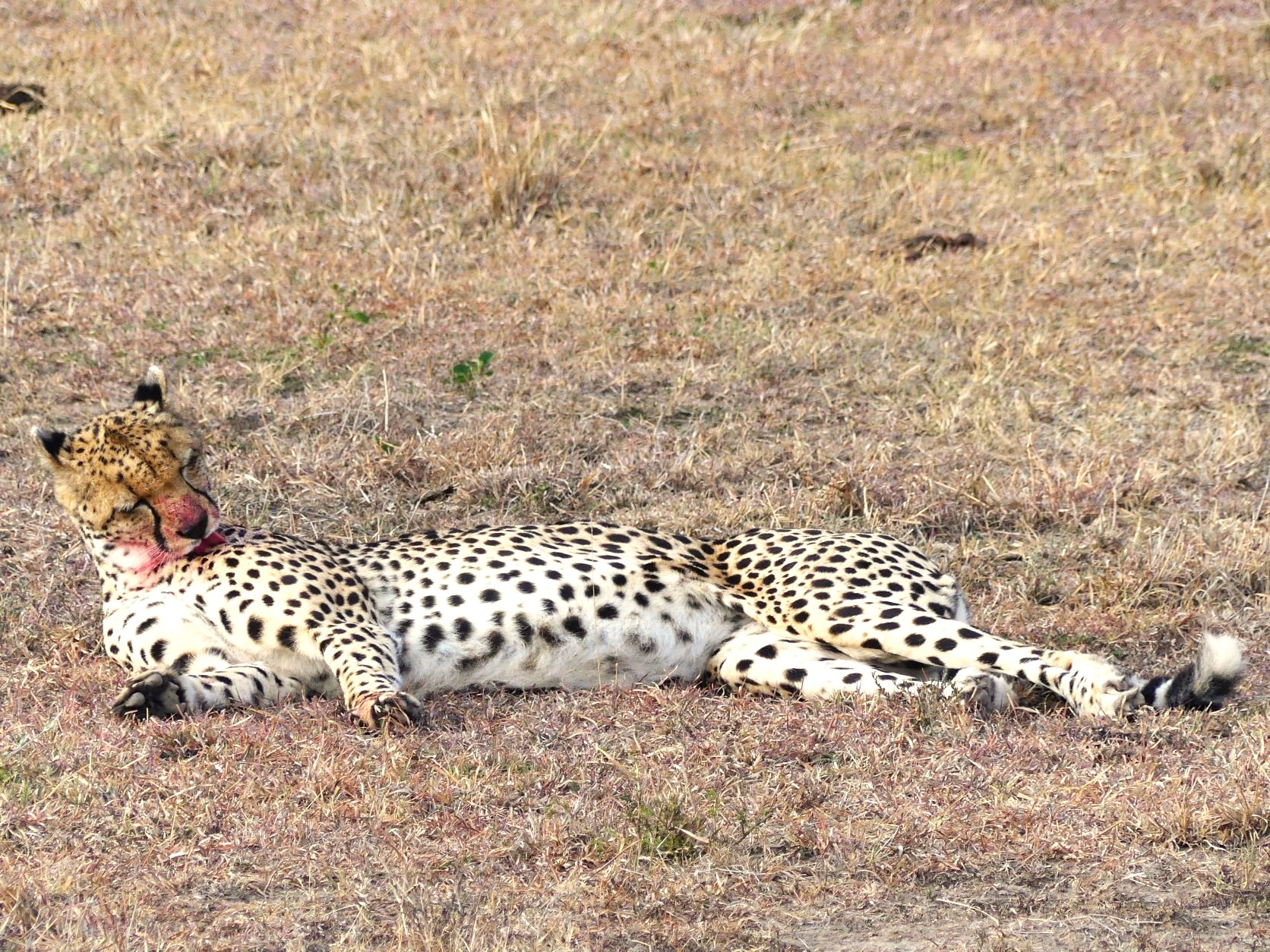
HYENAS!
The Spotted Hyena, largest of its species. Ugly as heck, but a most fascinating creature that I want to investigate further by watching nature documentaries. They’re one of the most intelligent mammals in the world, and are highly social.
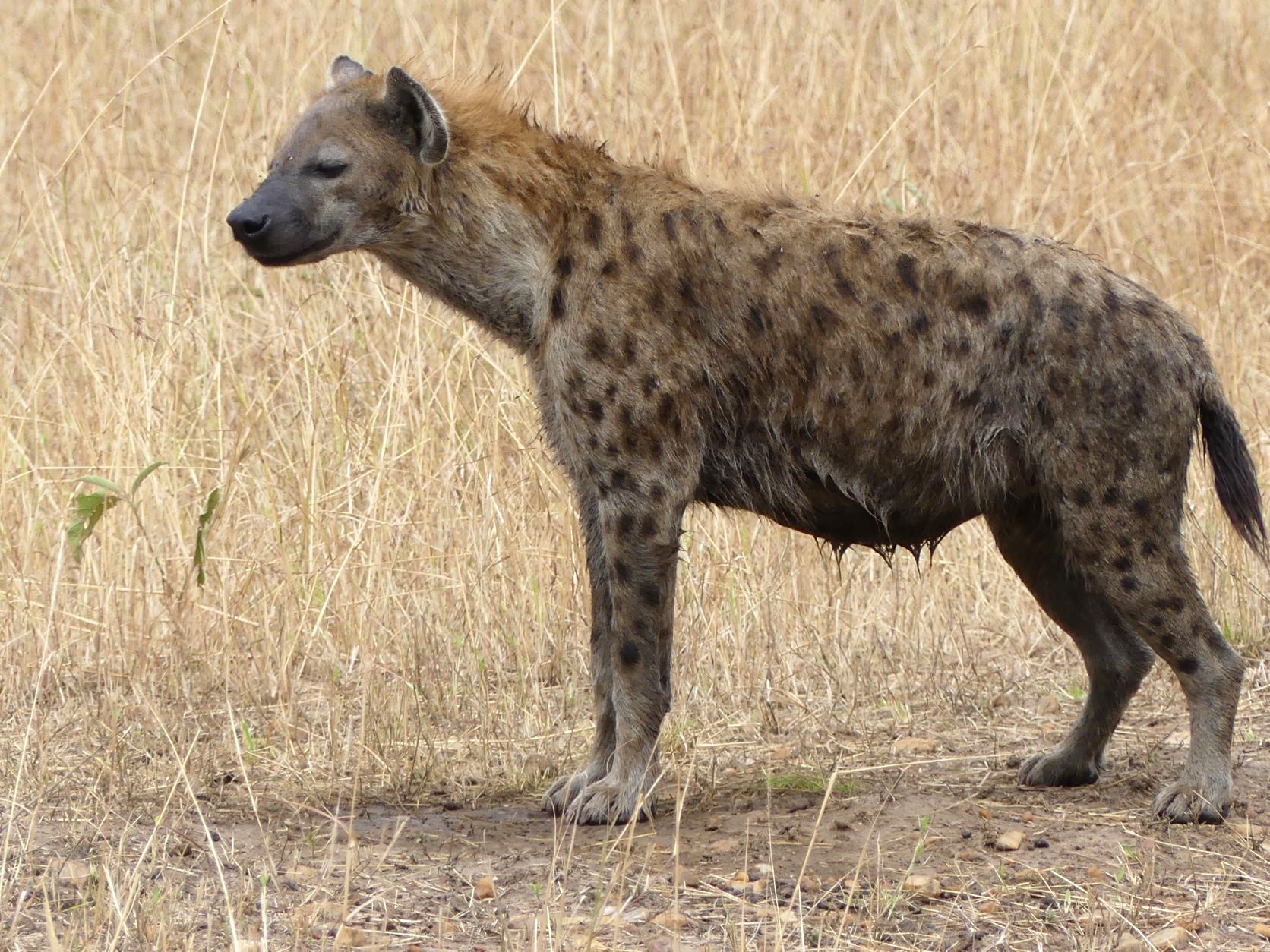
They’re pack hunters, and though mostly nocturnal, will venture out in the early morning hours. That’s when we saw the lone hyena as written about above with his rendezvous with the dining cheetah.
There would be many chance encounters with hyenas, and they stand out sharply in my mind for their unusual gait. It’s from having shorter back legs than their front limbs.
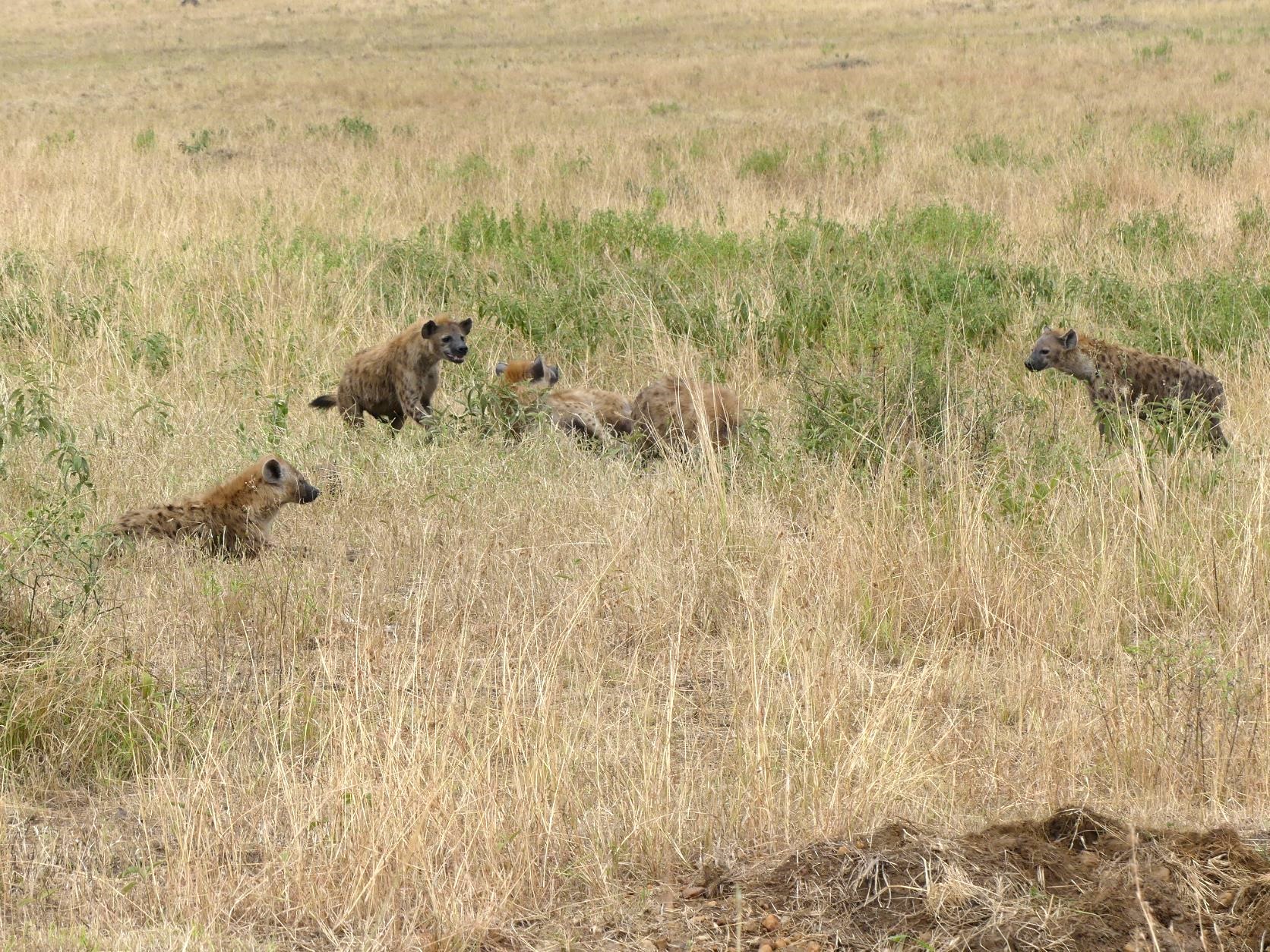
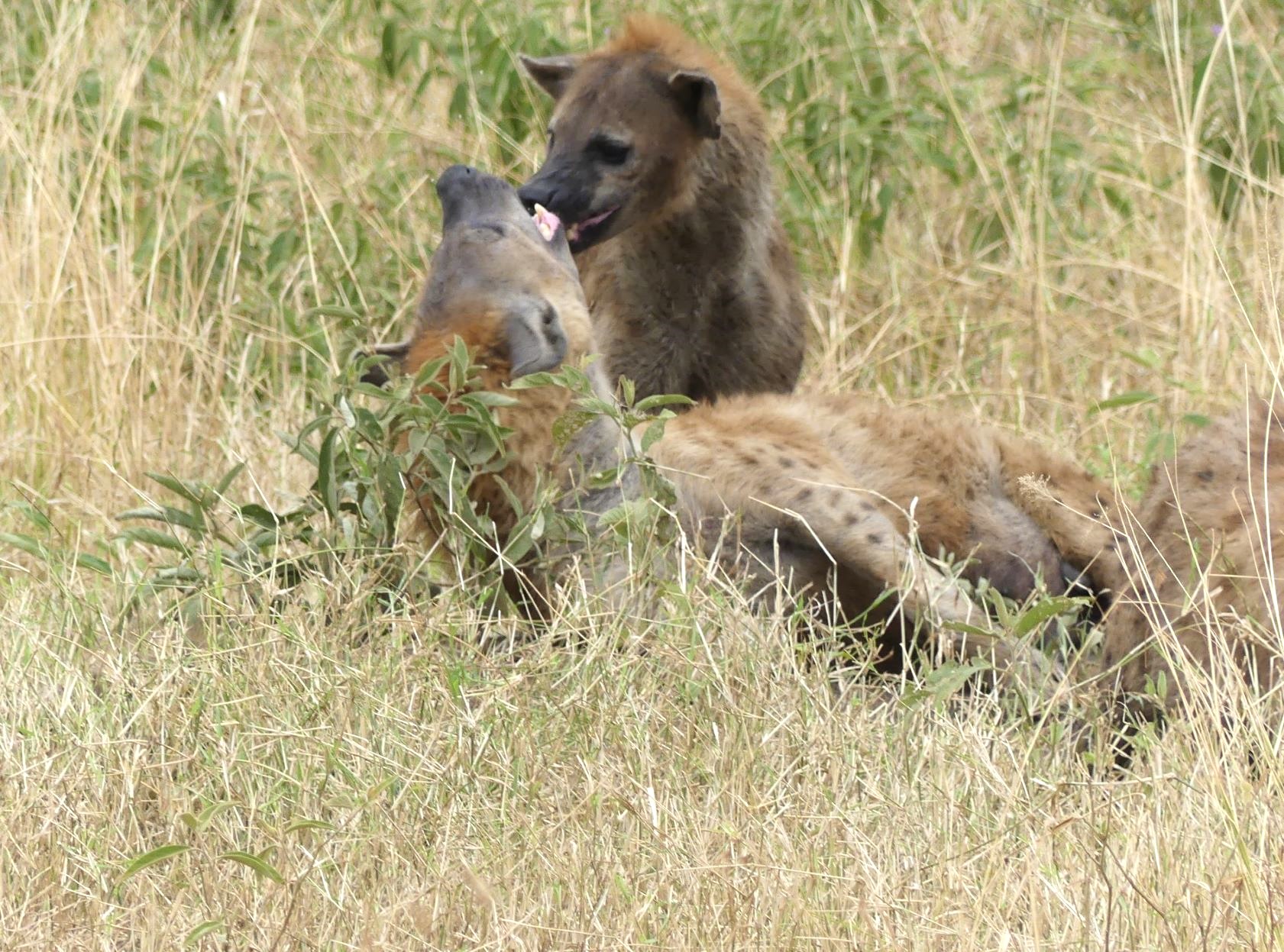
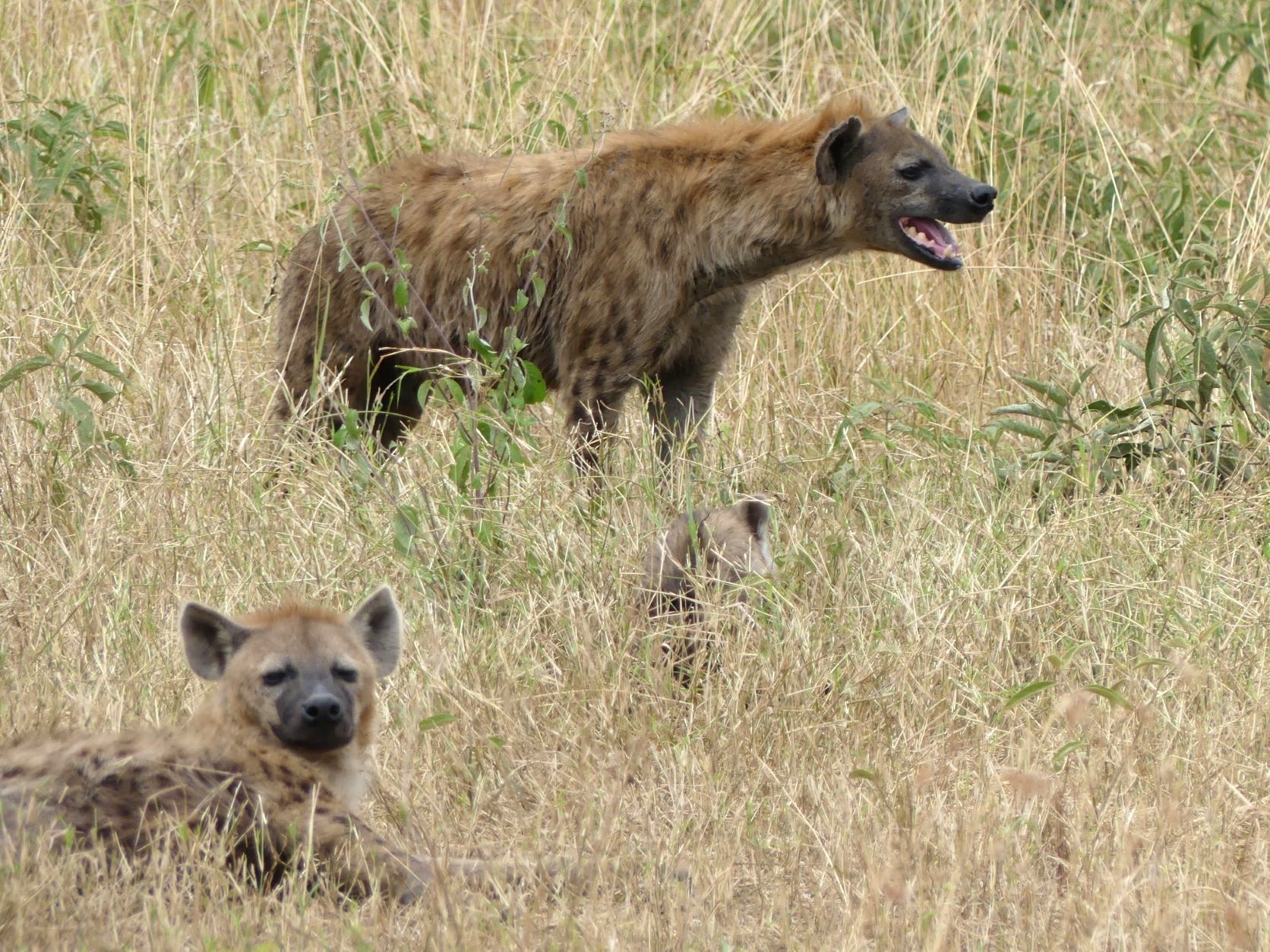
We came upon a den of them just off the road and stopped to watch a family clan interacting. There’s a designated Queen and matriarchal hierarchy amongst them and you better stay in line or else!
ZEBRAS!
“Does my butt look big in this?” Well, now that I’ve seen zebra butts close up, I can confirm the popular belief about wearing stripes across the derriere DO appear to make your butt look big. Butt cute, too!
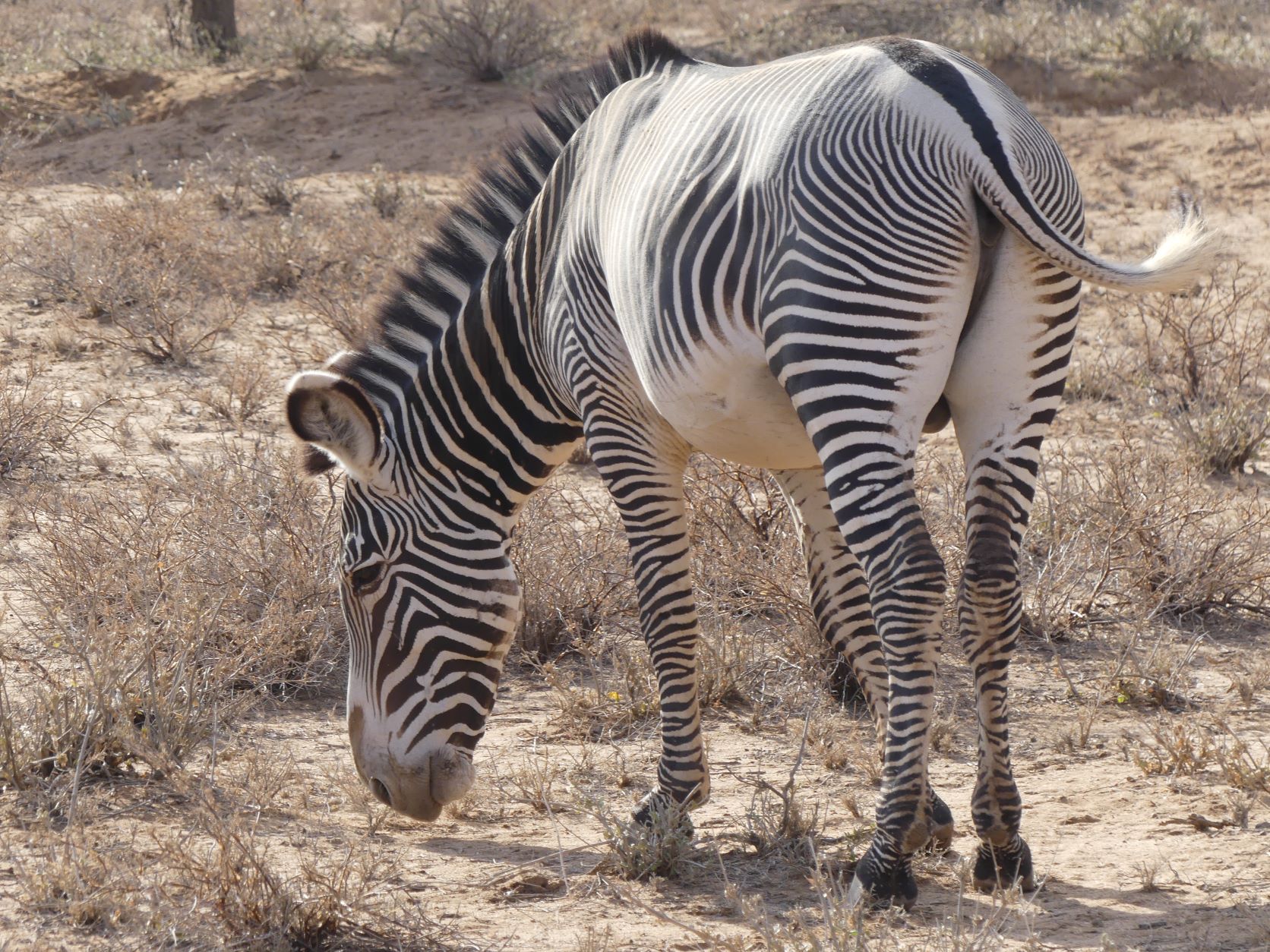
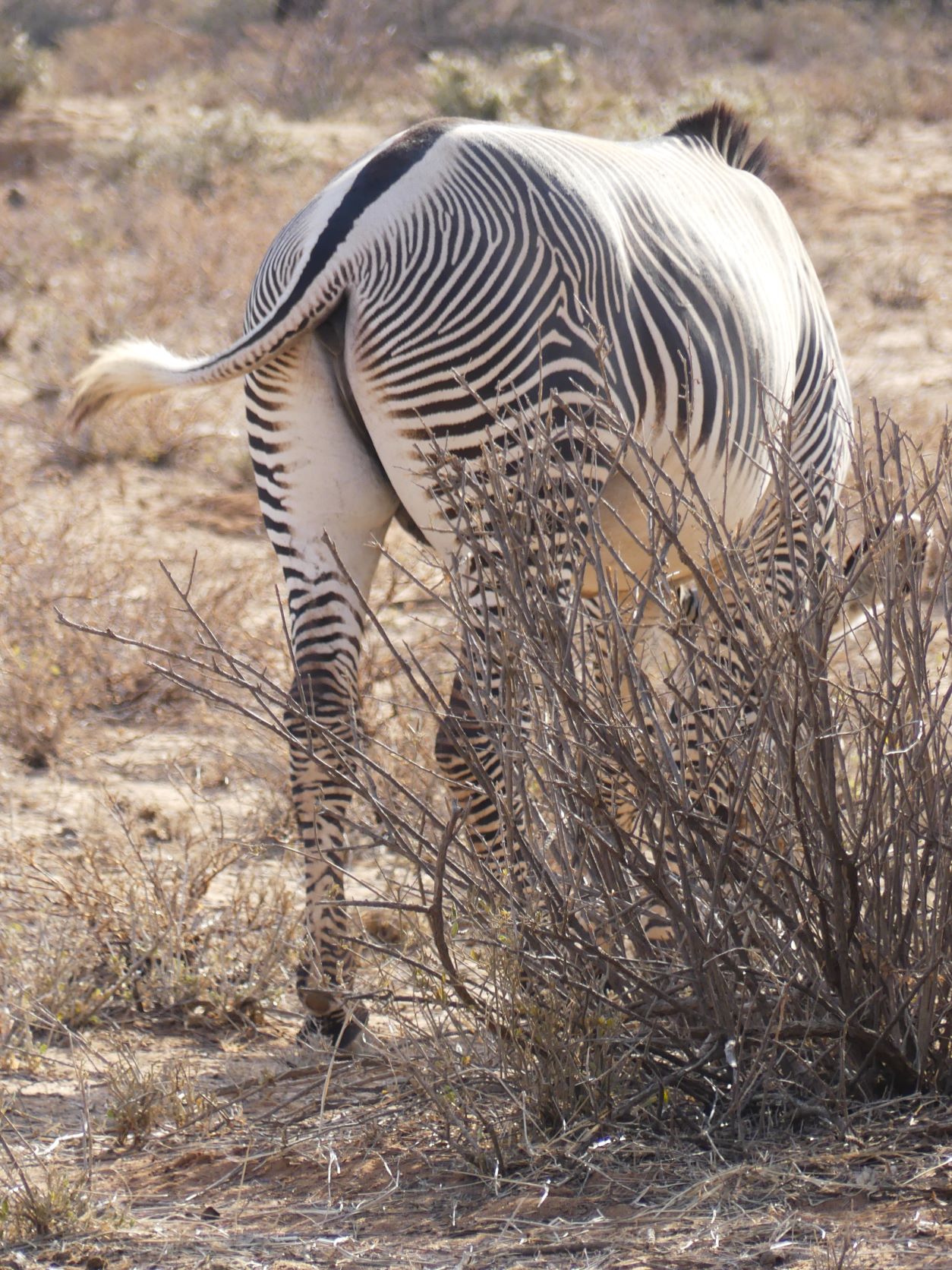
Kenya has two distinct species: the Plains Zebra (or Common) and the endangered Grévy’s Zebra. We saw so many groups or “dazzles” of zebras all over Kenya and never tired of watching their black and whites dazzle us.
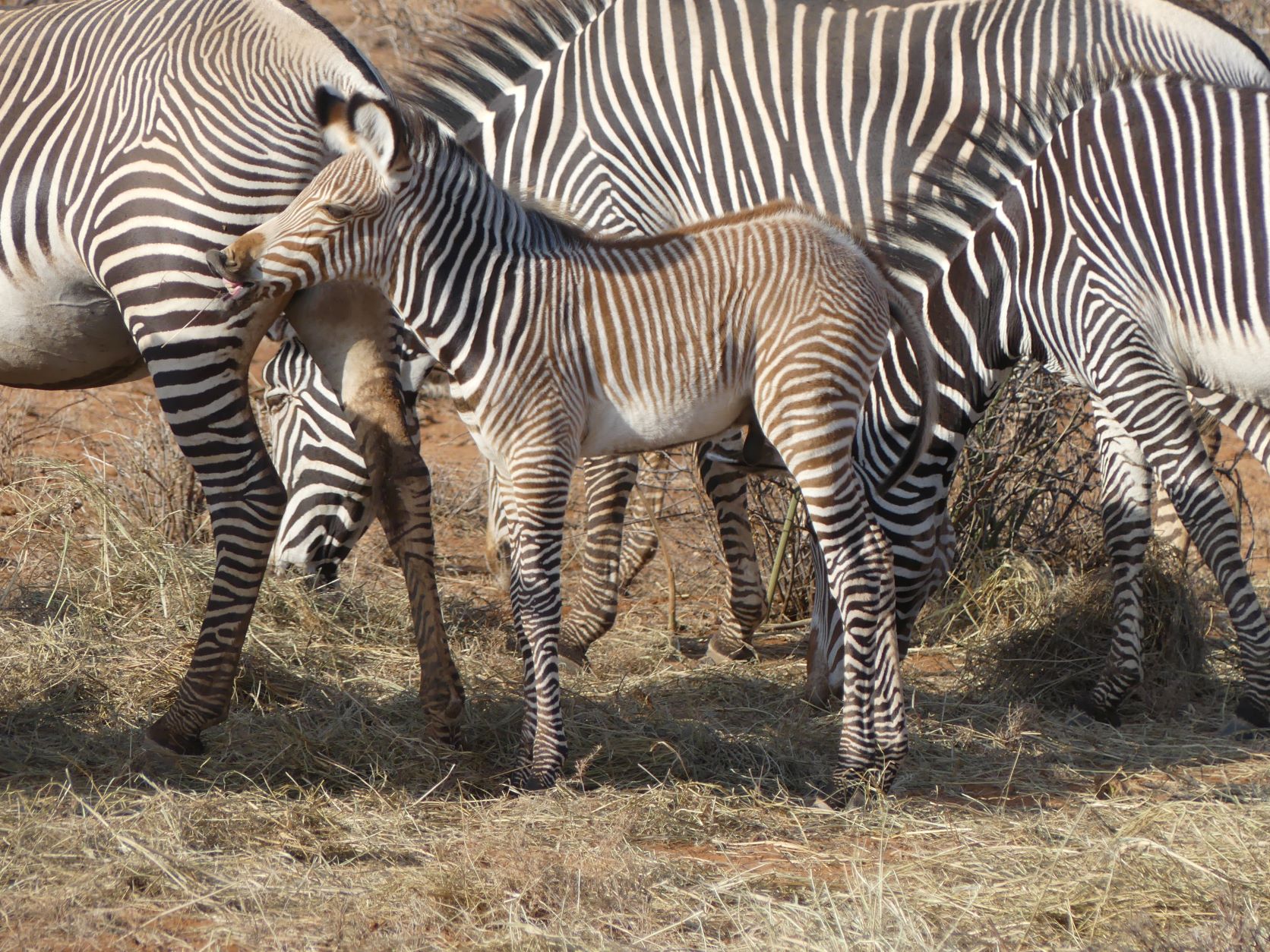
It was curious to see brown striped zebras spotted here and there and wondered why. Brown stripes are natural for newborns. Most turn black between 9-18 months old. But besides black, brown and blonde stripes do show up. Here to make you dizzy are some dazzlers …


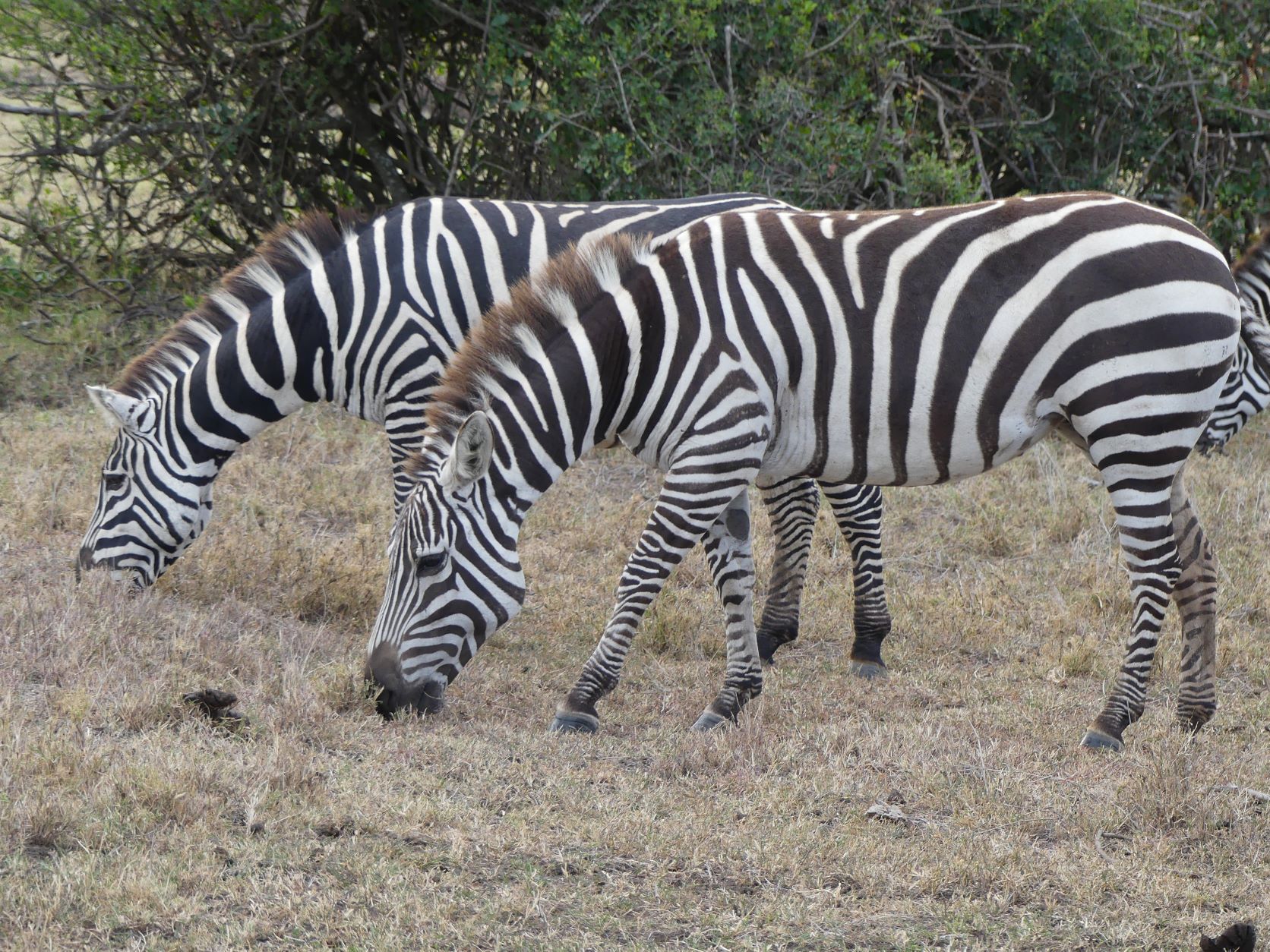
Zebras join in with their fellow wildebeests en masse as part of the annual “Great Migration” from Tanzania to Kenya’s Masai Mara.
GIRAFFES!
The giant Giraffes. How can you not love them? We’d come across “towers” of them quietly grazing.
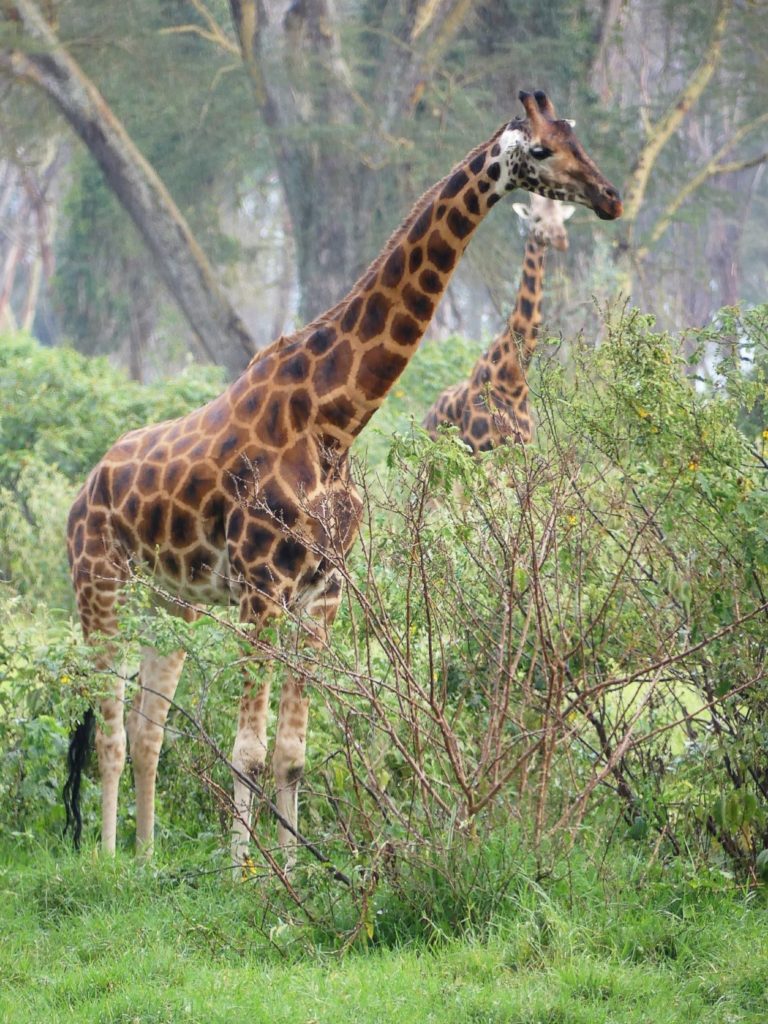
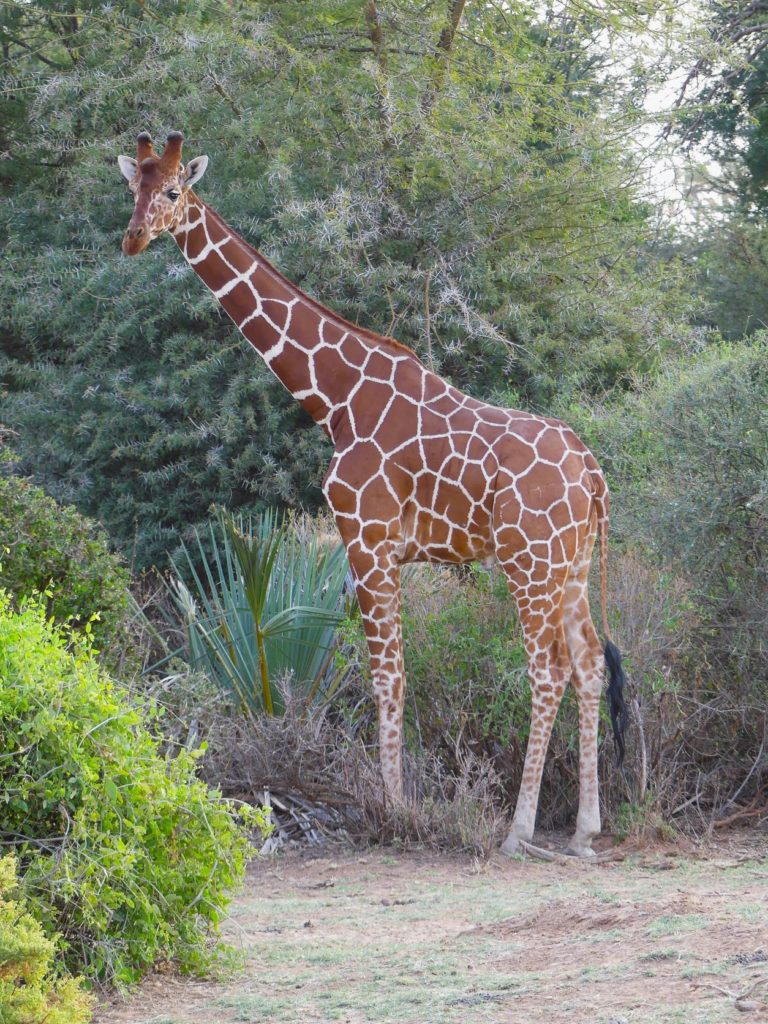


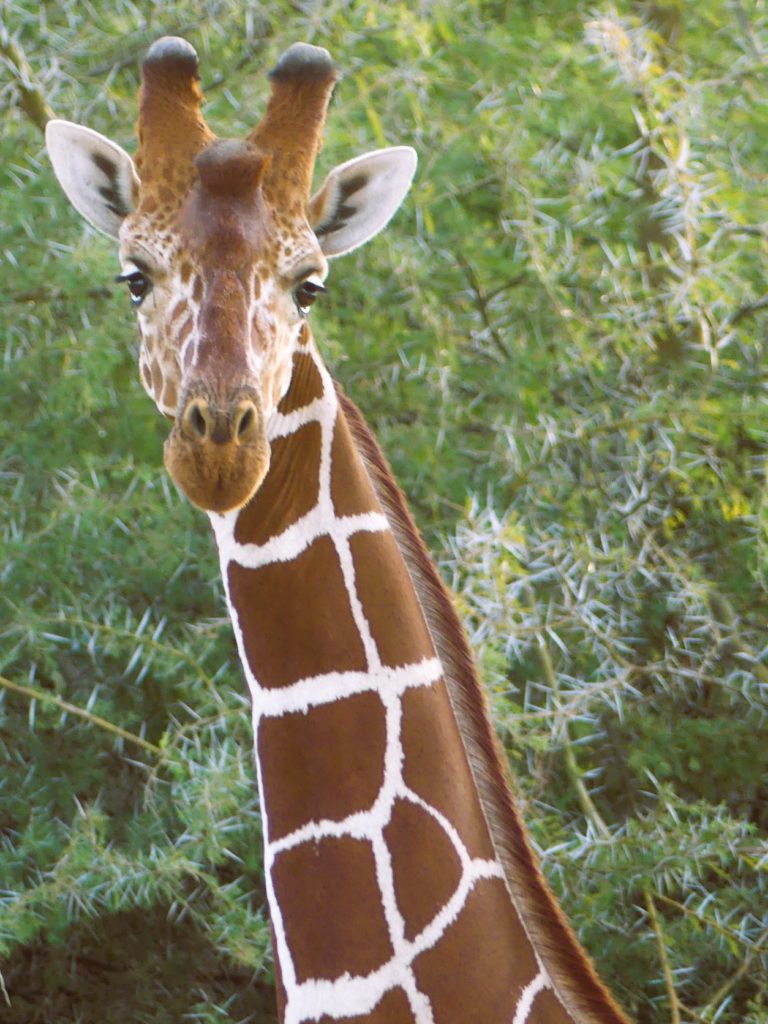
The giraffe’s height helps it keep a sharp lookout for predators across the savannah. They make for an excellent early warning system; other animals hang out with them to take advantage of their ability to see danger from a distance.
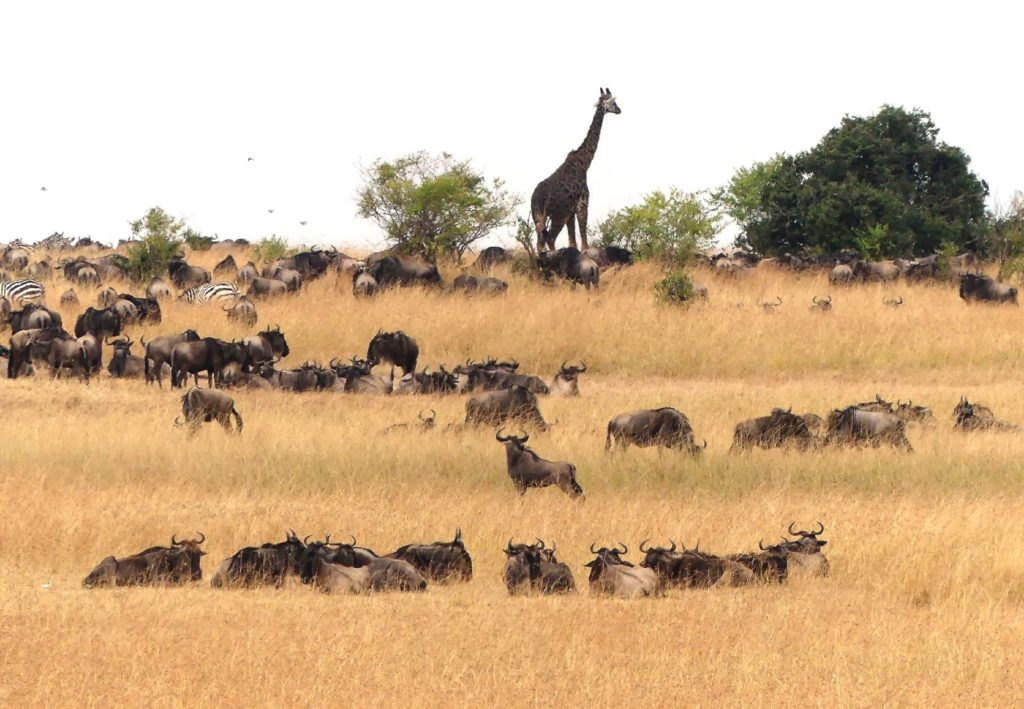
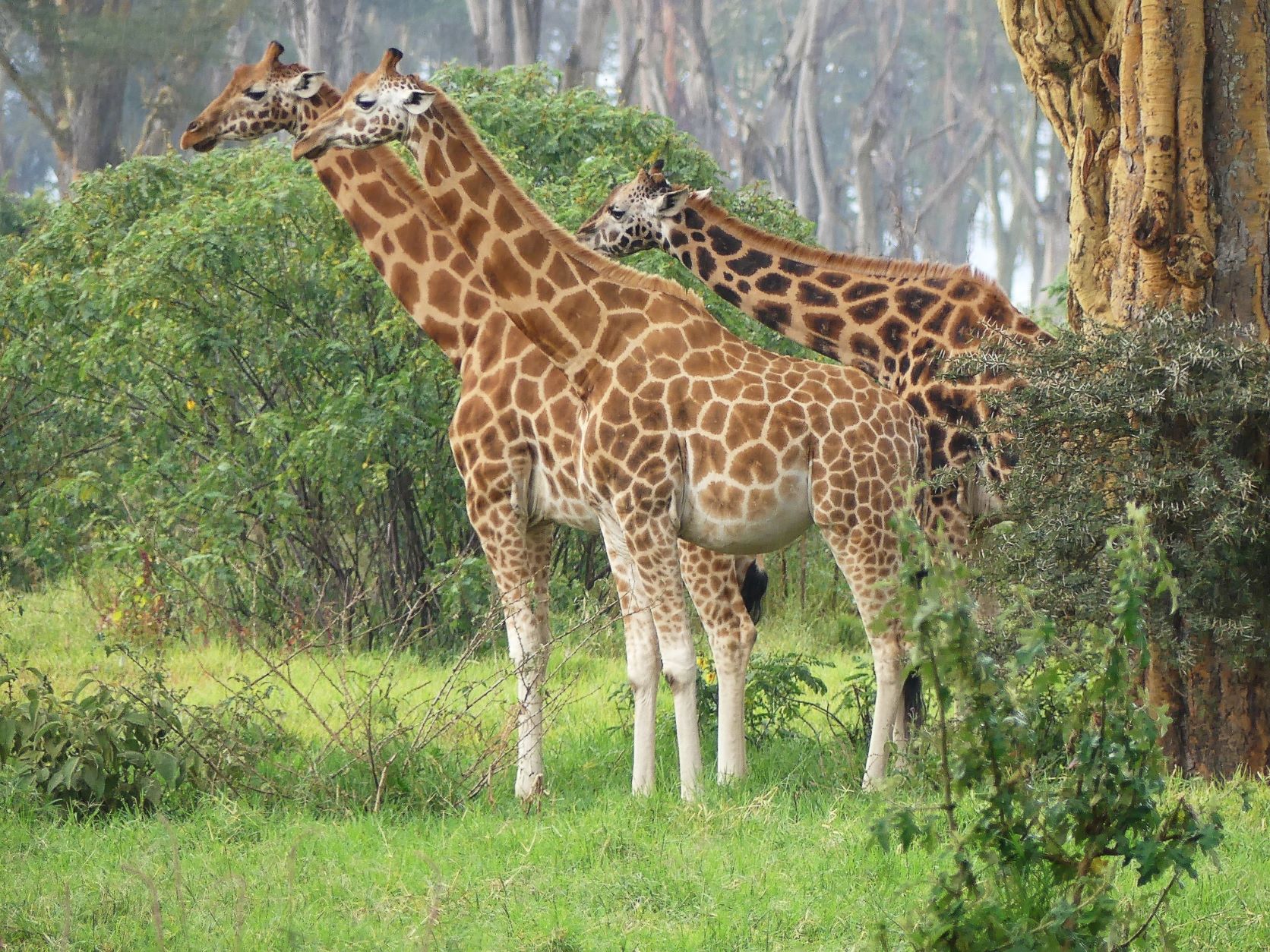
The Giraffe Centre … a sanctuary on the outskirts of Nairobi, where we got up-close and hands-on with giraffes. There are three species that we’d come across during our safaris: the rare and endangered Rothschild’s giraffe; the Reticulated giraffes with brown/white brick-like pattern; and the Masai giraffe with its distinctive, irregular, jagged, star-like blotches that extend from the hooves to its head. Please see their photos above.

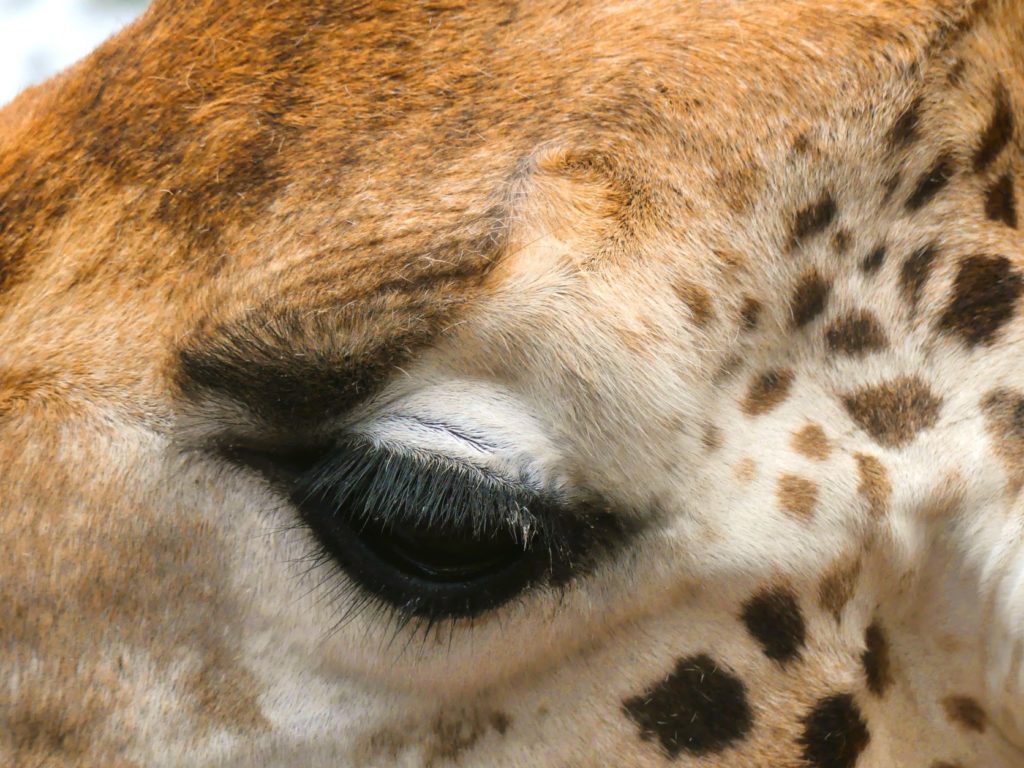
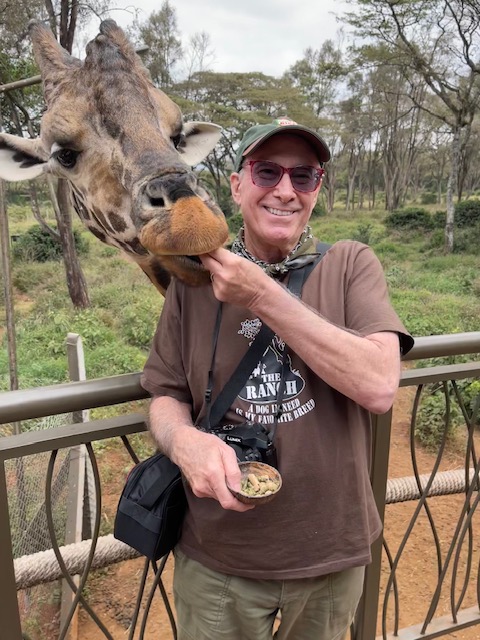
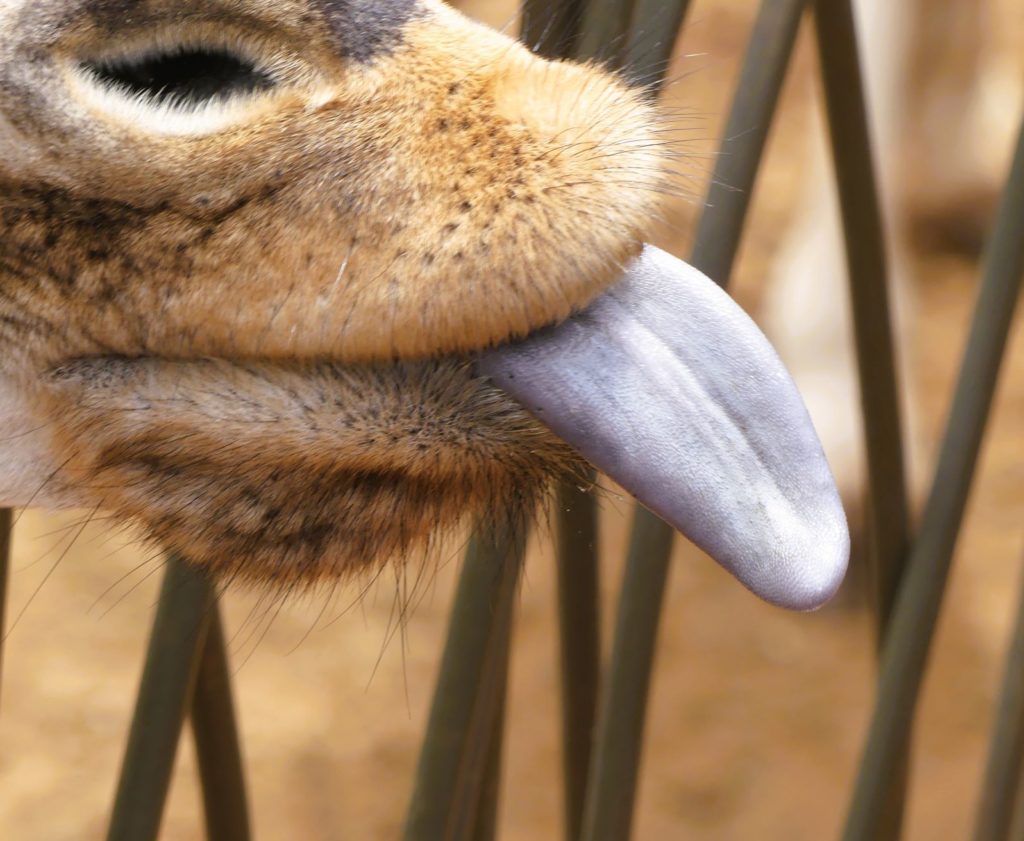
HIPPOPOTAMUS!
Hippopotamus “bloat” or “pod” … is their group gathering. How about 94 of them?! That’s how many Steve counted from the Hippo Pool viewpoint on the Mara River; just minutes from the Tanzanian border, and beyond is the great Serengeti that stretches along the northern Tanzanian border with Kenya.

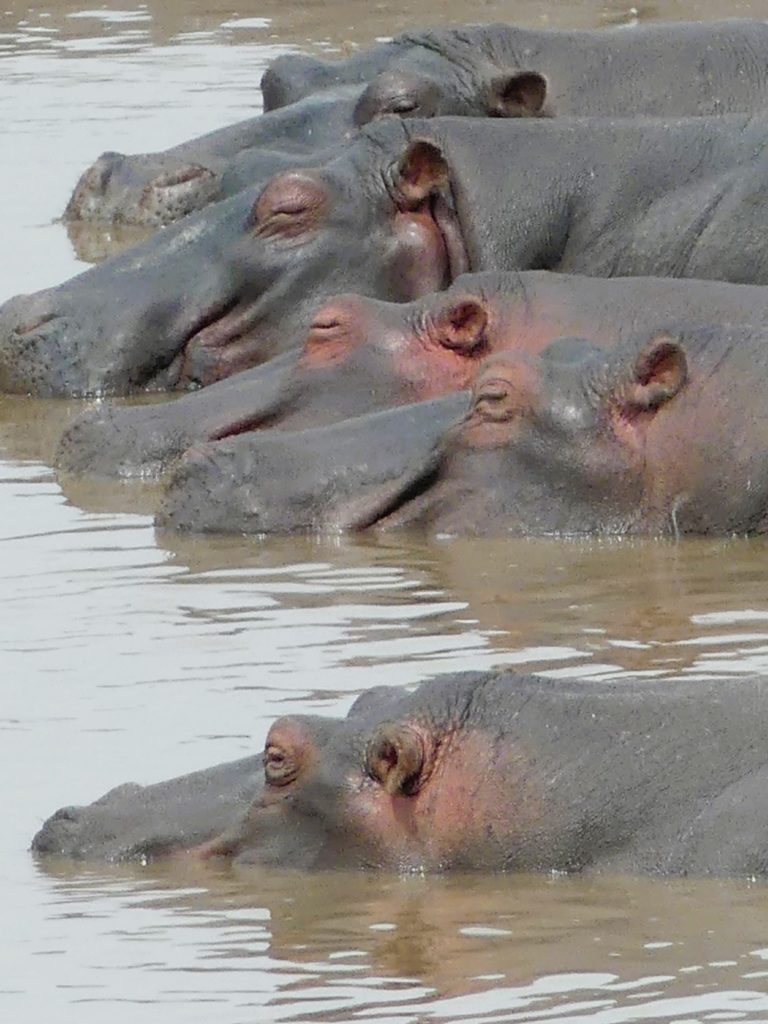
The camera’s zoom lens revealed their brownish-pink colored hide, especially as it fades down below. Hippos secrete a reddish oily fluid sometimes called “blood sweat” from special glands in their skin. This fluid functions as a skin moisturizer, water repellent and antibiotic. Hence, the distinctive pinkish-red appearance.
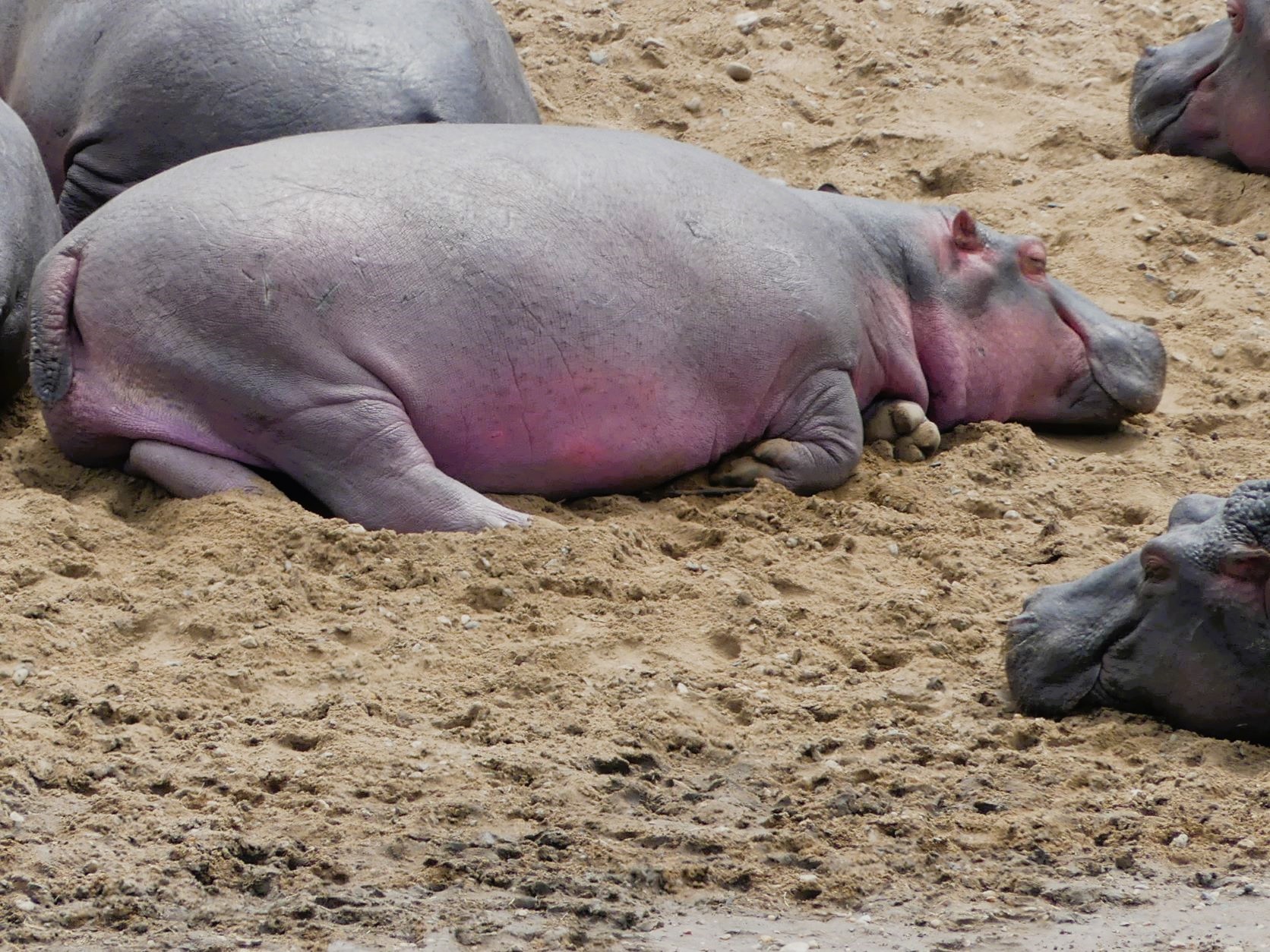
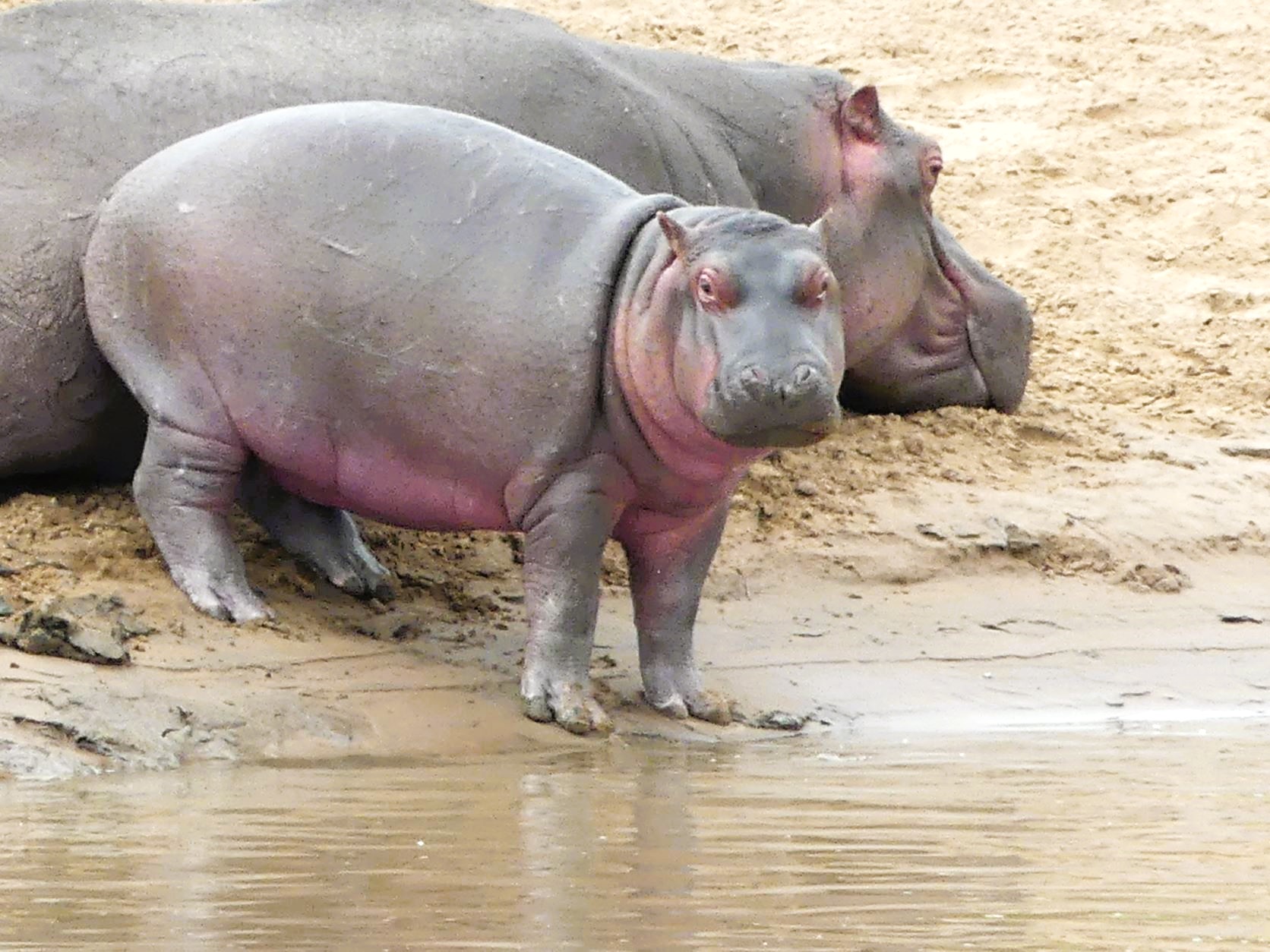
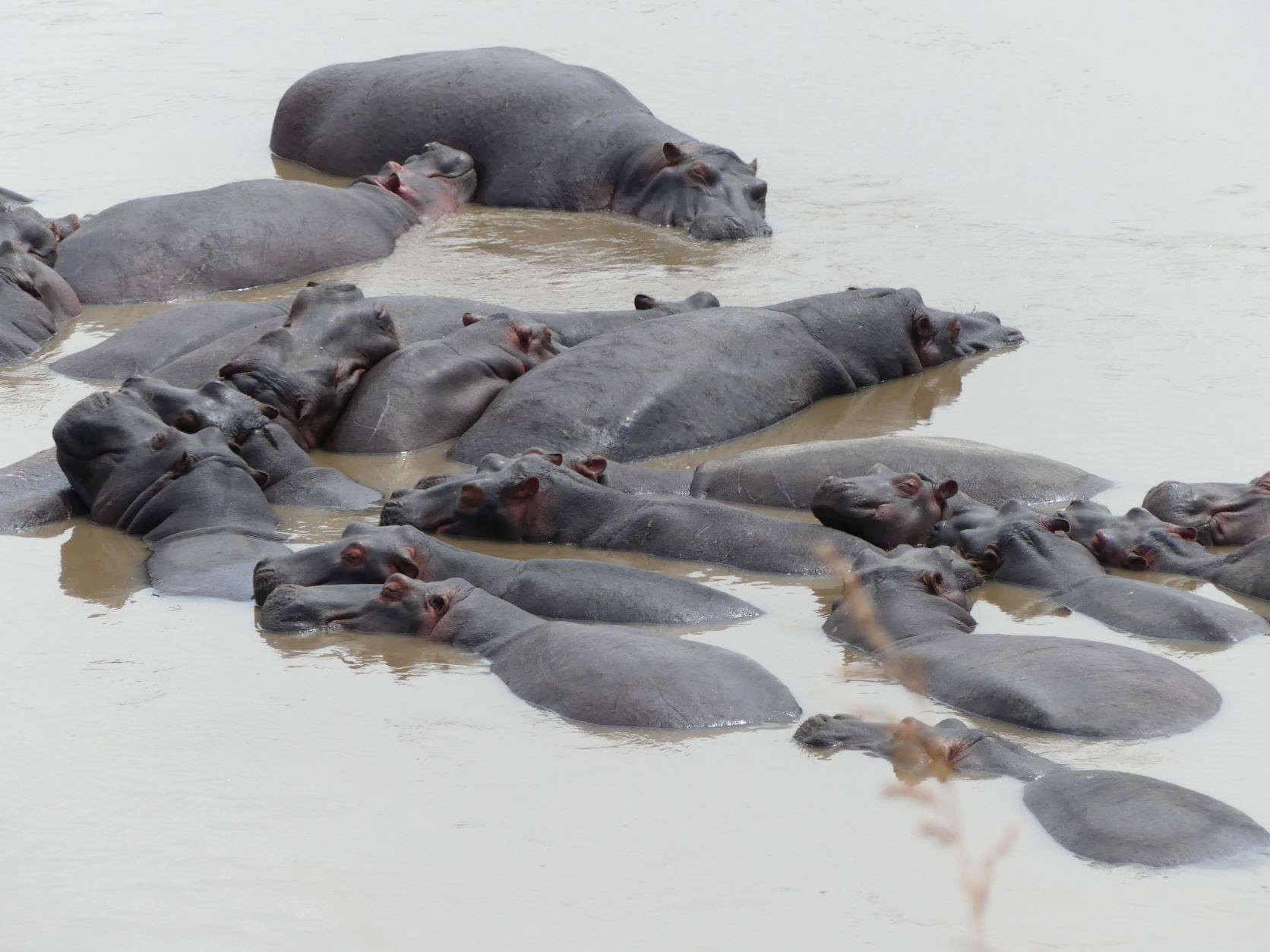
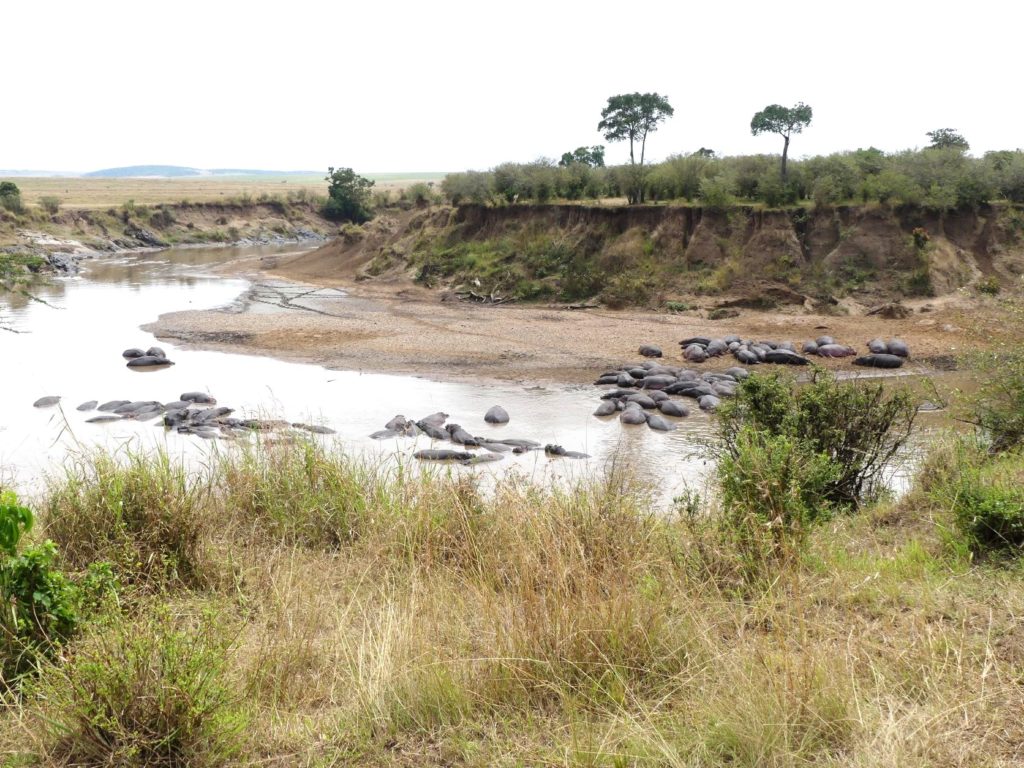
CROCODILES!
Sunbathing not far away from the hippos were some pretty awesome-sized crocodiles awaiting the wildebeests and zebras to cross from the Mara River cliffs. The ranger pointed out one hunk over 16 feet long and with a pretty big set of chops! Secretly glad we weren’t privy to a feeding frenzy massacre. Best left to tv watching where you can easily look away.


MONKEYS! BABOONS!
The Vervet Monkey and Baboons were the most seen primates. Their antics and expressive eyes were always fun to watch, but from a distance – you don’t want to get into any encounters with these moody and playful guys.
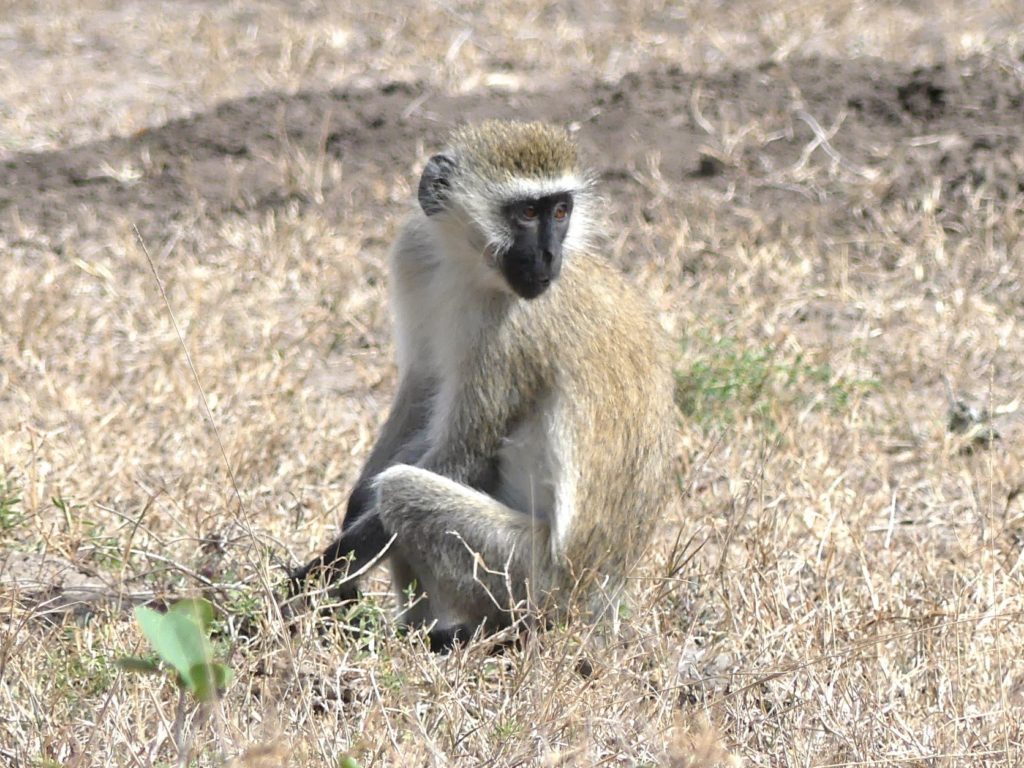

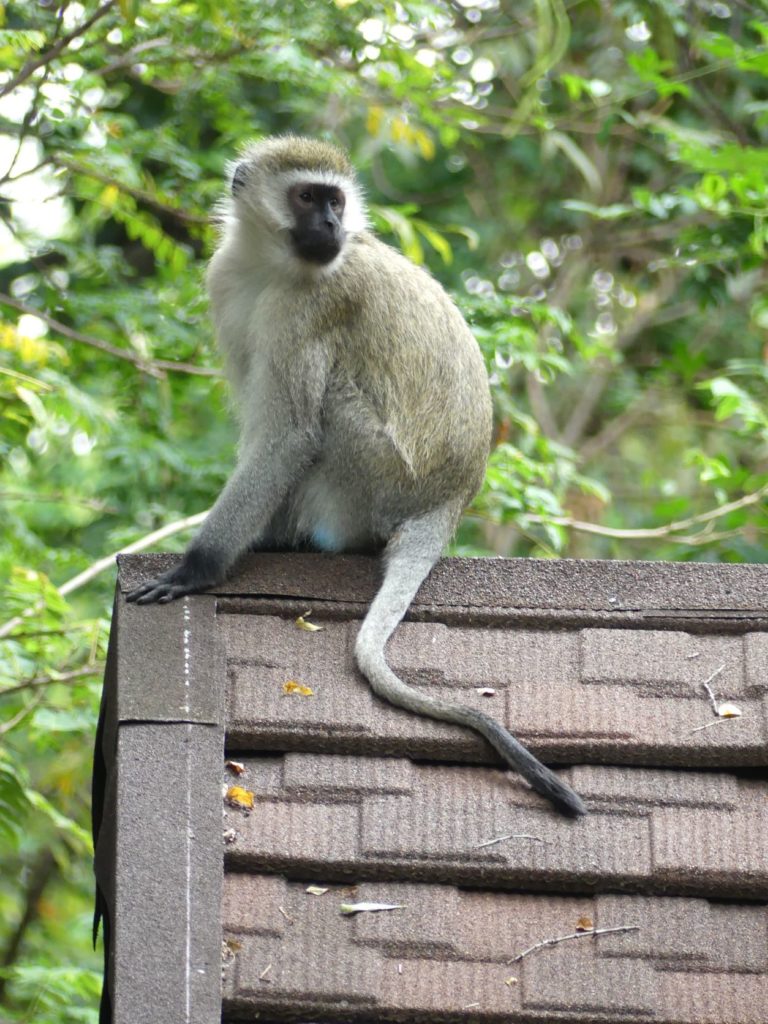
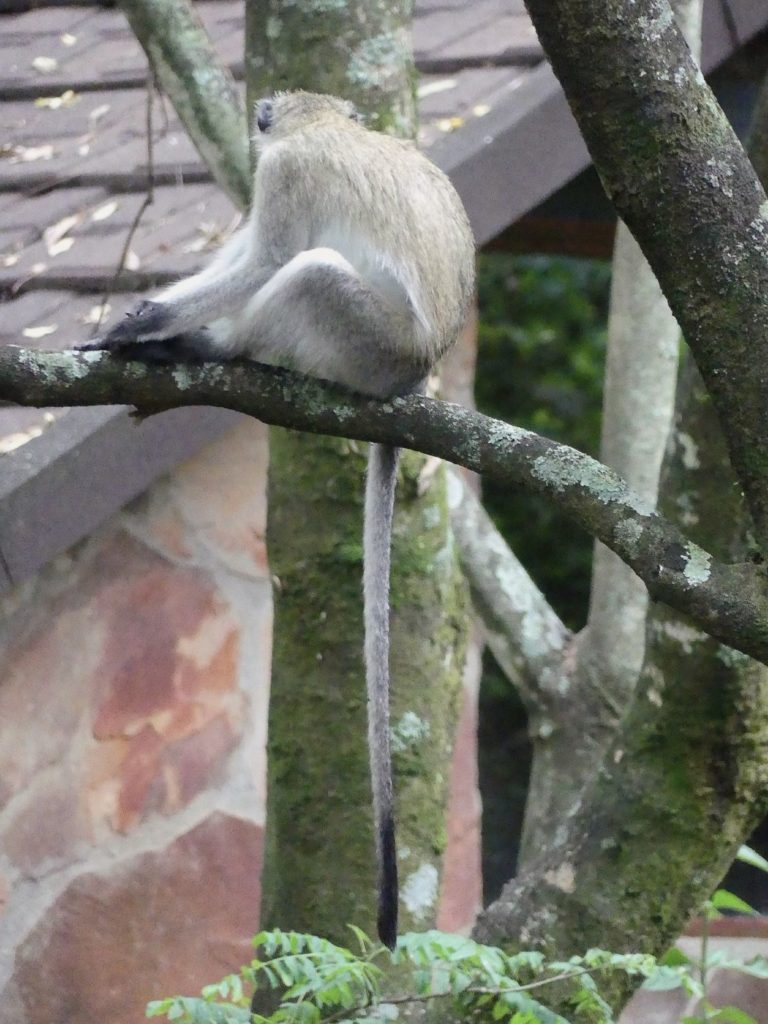
Many a time, we’d be forewarned about being vigilant with baboons. They’d be hanging out close by our hotel rooms, and can easily let themselves in if you don’t lock up properly or they’ll snatch your belongings away if you’re not alert to their nimbleness.
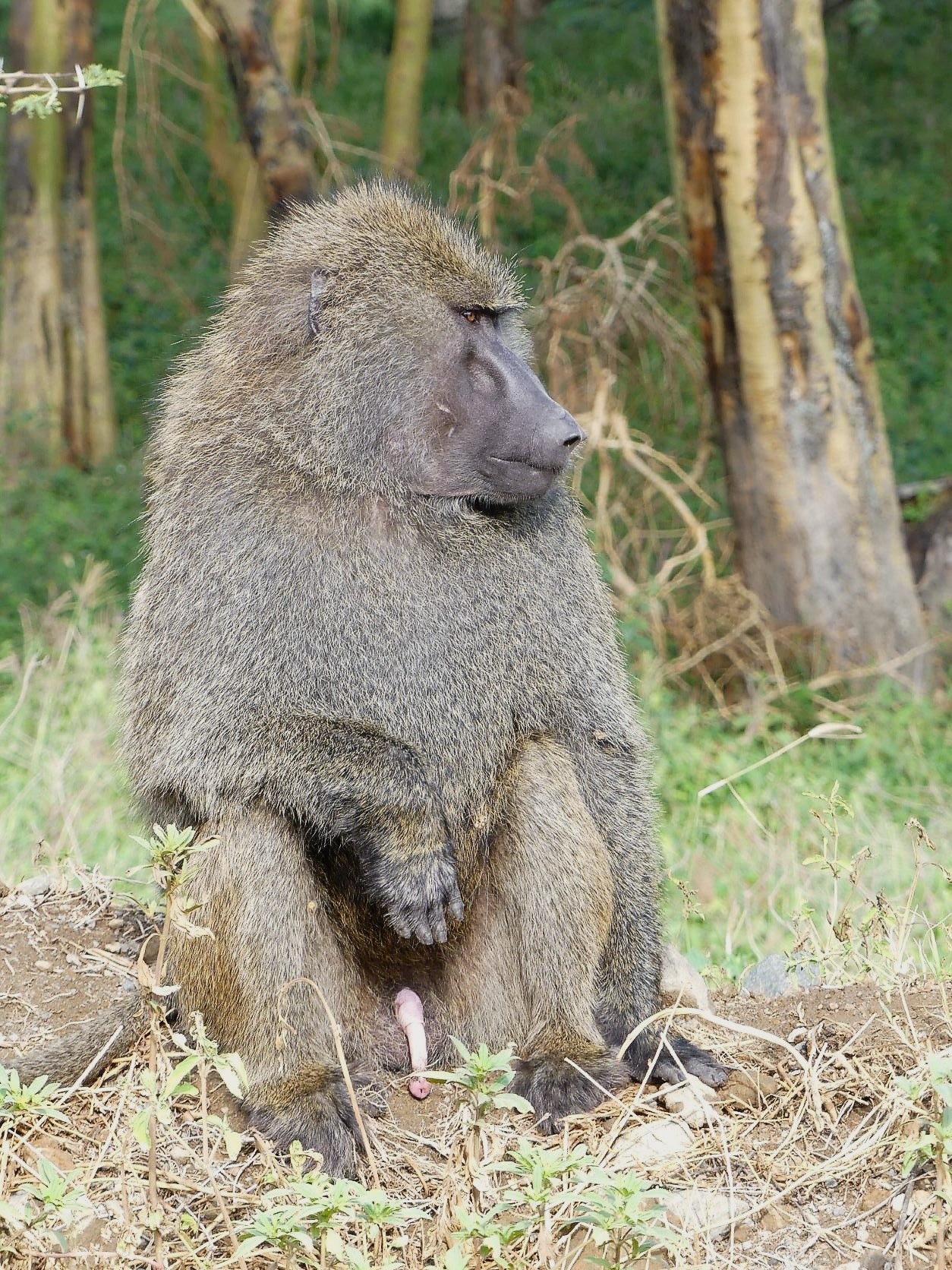
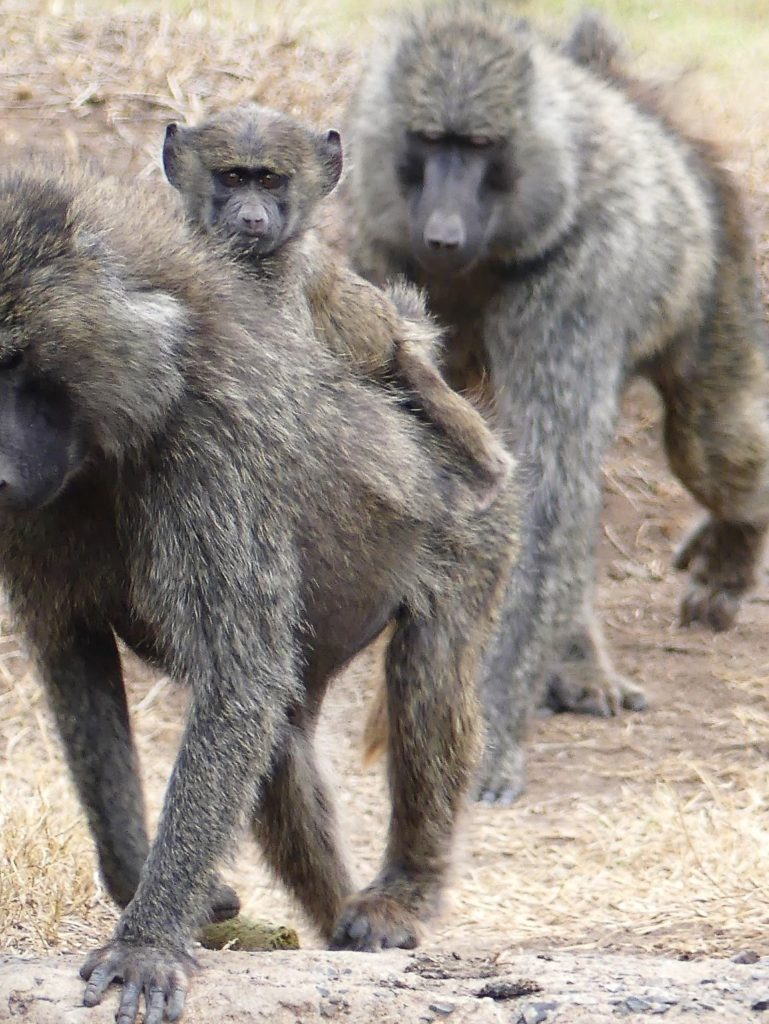
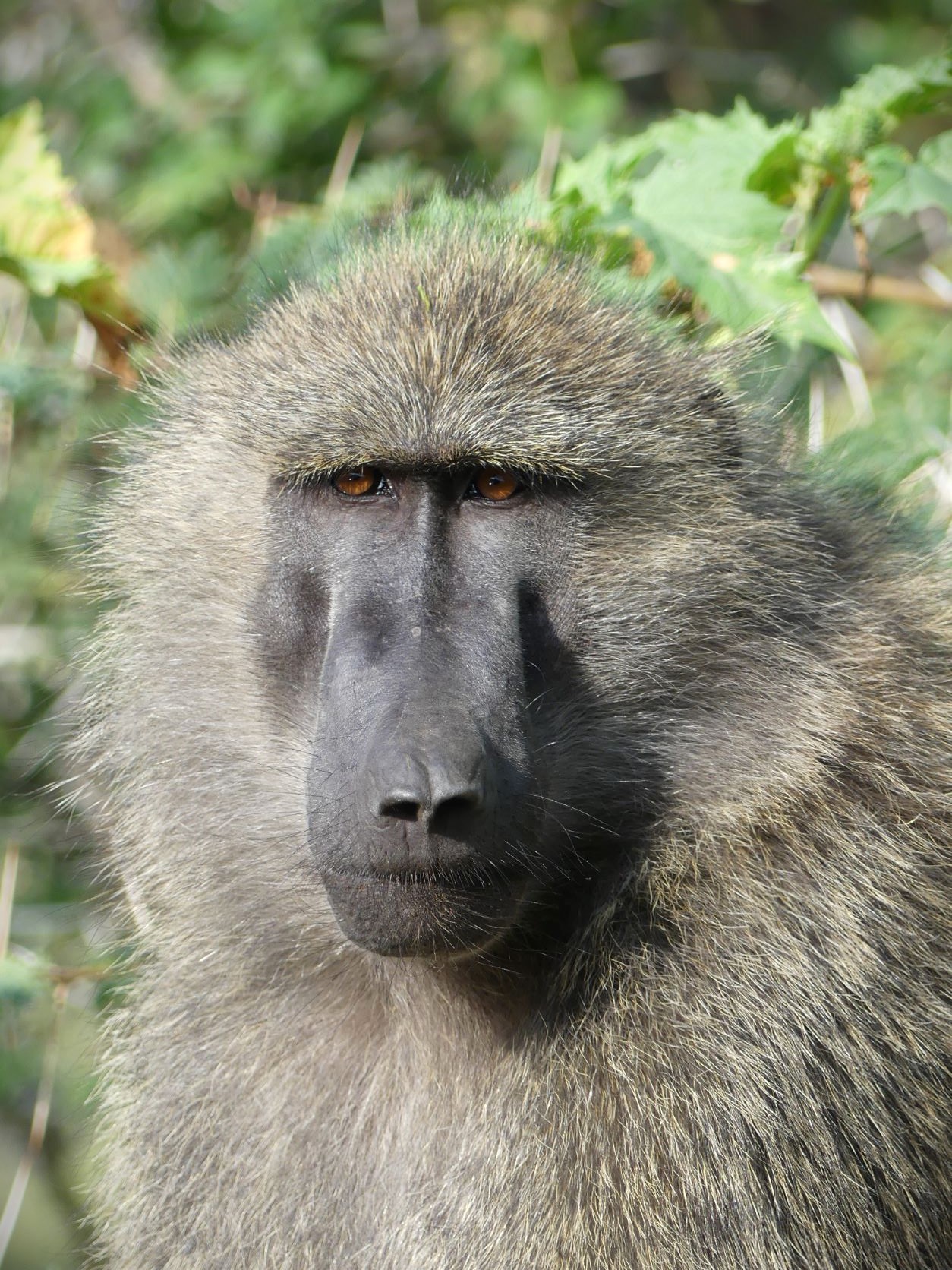
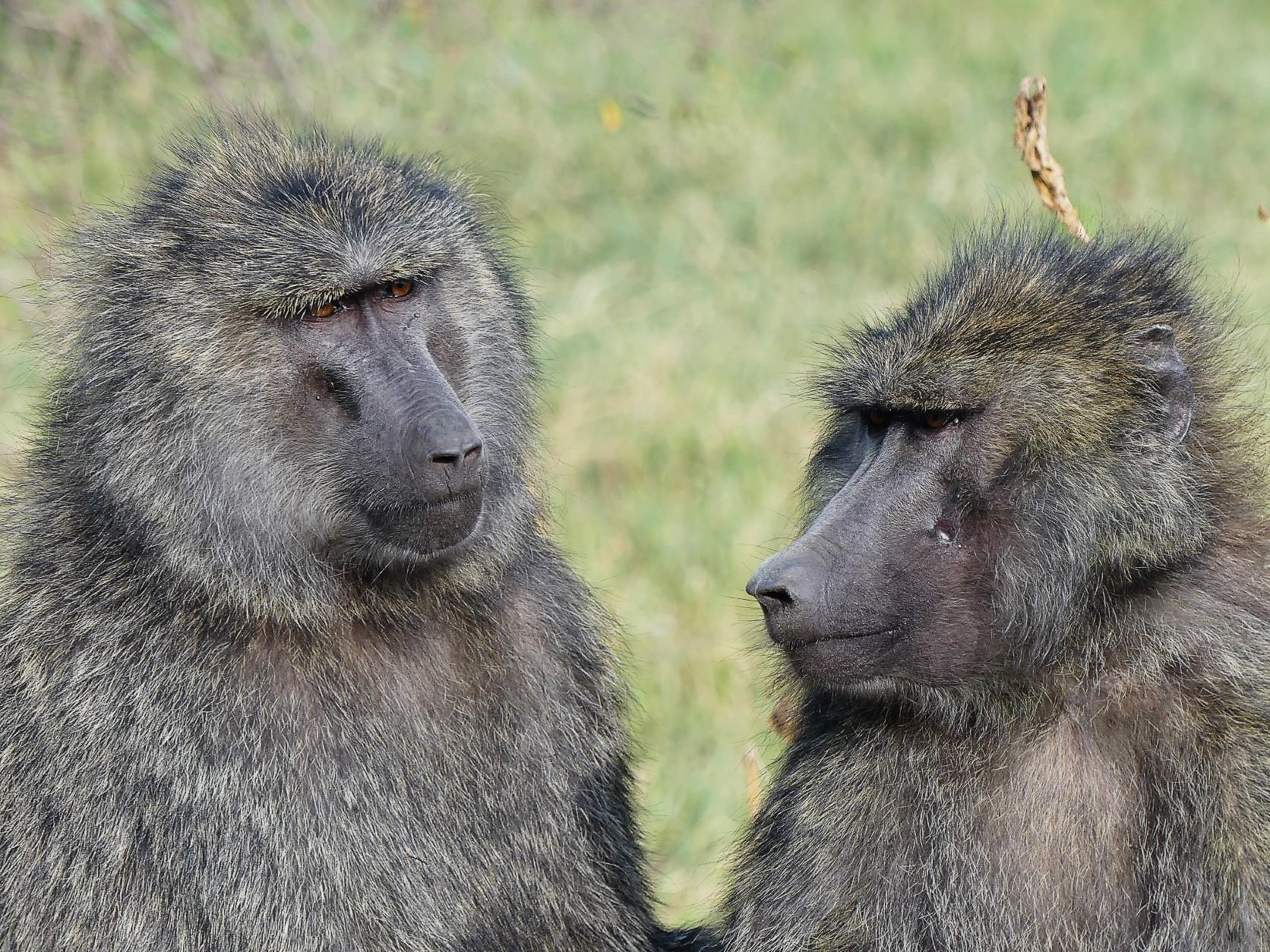
ANTELOPES! GAZELLES!
Impalas, Thomson Gazelles, Topi, Dik-diks, Waterbucks, Oryx, Elands, Hartebeests, Bushbuck, Gerenuk, Reedbuck, and Wildebeests, aka Gnu … these were among the many antelopes and gazelles spotted.
Ever ubiquitous, these beautiful, swift creatures roam the savannahs and forests, appearing most everywhere we traveled; being tiny, small, medium and large in size. Their magnificent antlers and horns come in all shapes and sizes.
The Gerenuk, also known as the giraffe gazelle (its name means “giraffe-necked” in Somali), has an exceptionally long neck for an antelope. Only the males have the lyre-shaped horns.
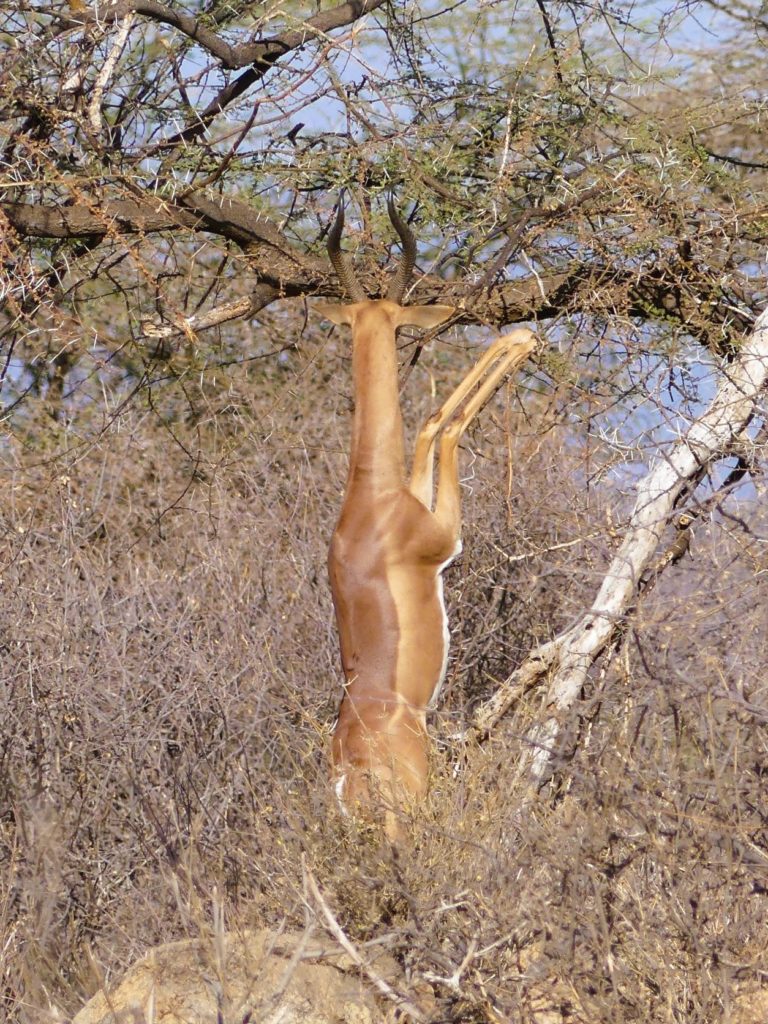
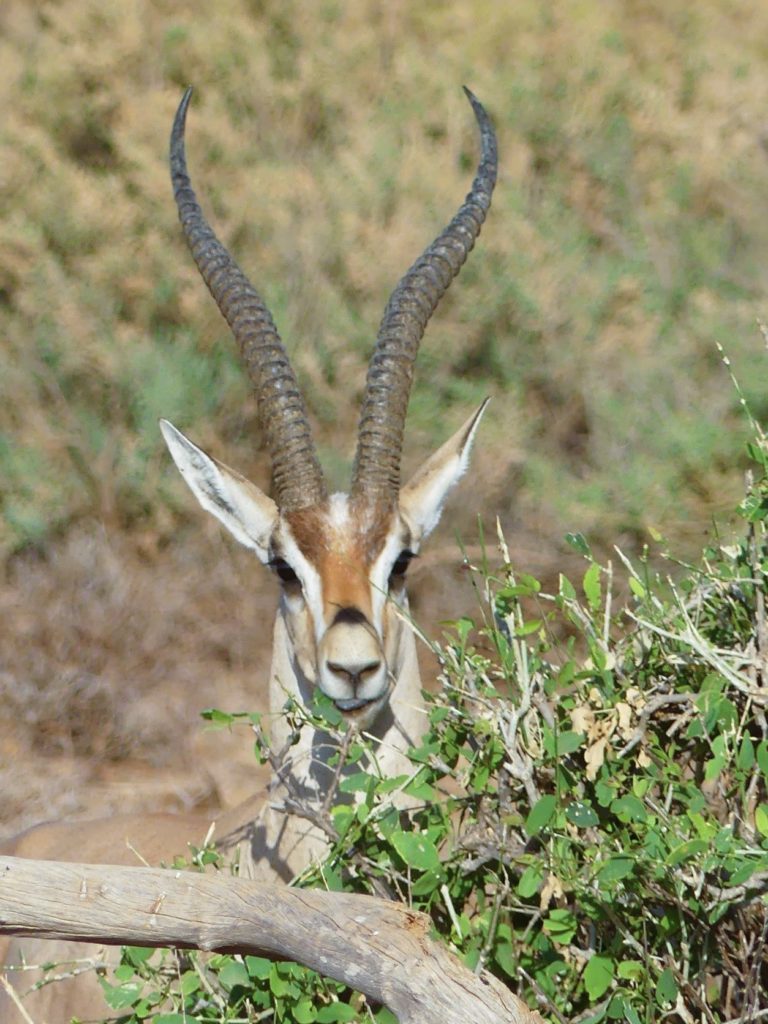
What makes them fascinating is their ability to stand on its powerful hind legs in order to reach foliage that others cannot. They’re considered loners and are usually sighted singly as this male.
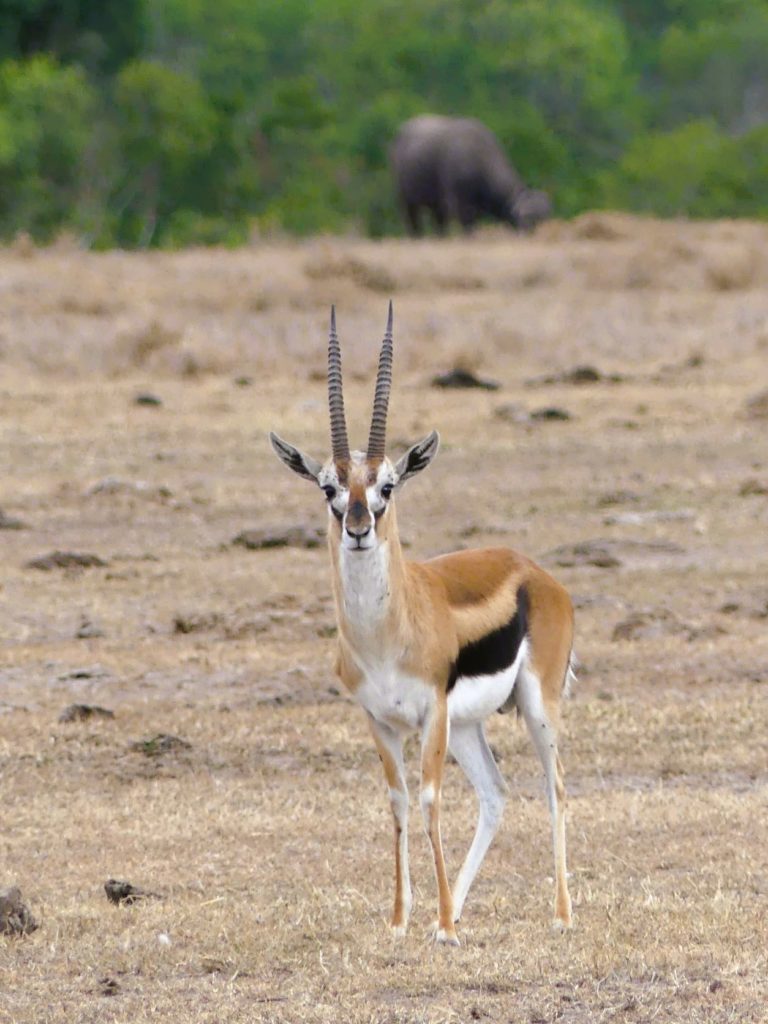
On the more grander scale, is the large Common Waterbuck antelope. Elegant, regal and statuesque, a lone waterbuck remains ingrained in my mind, with its gracefully curved horns. They are sometimes used with lethal results when males fight one another over territories. Beautiful, but deadly.
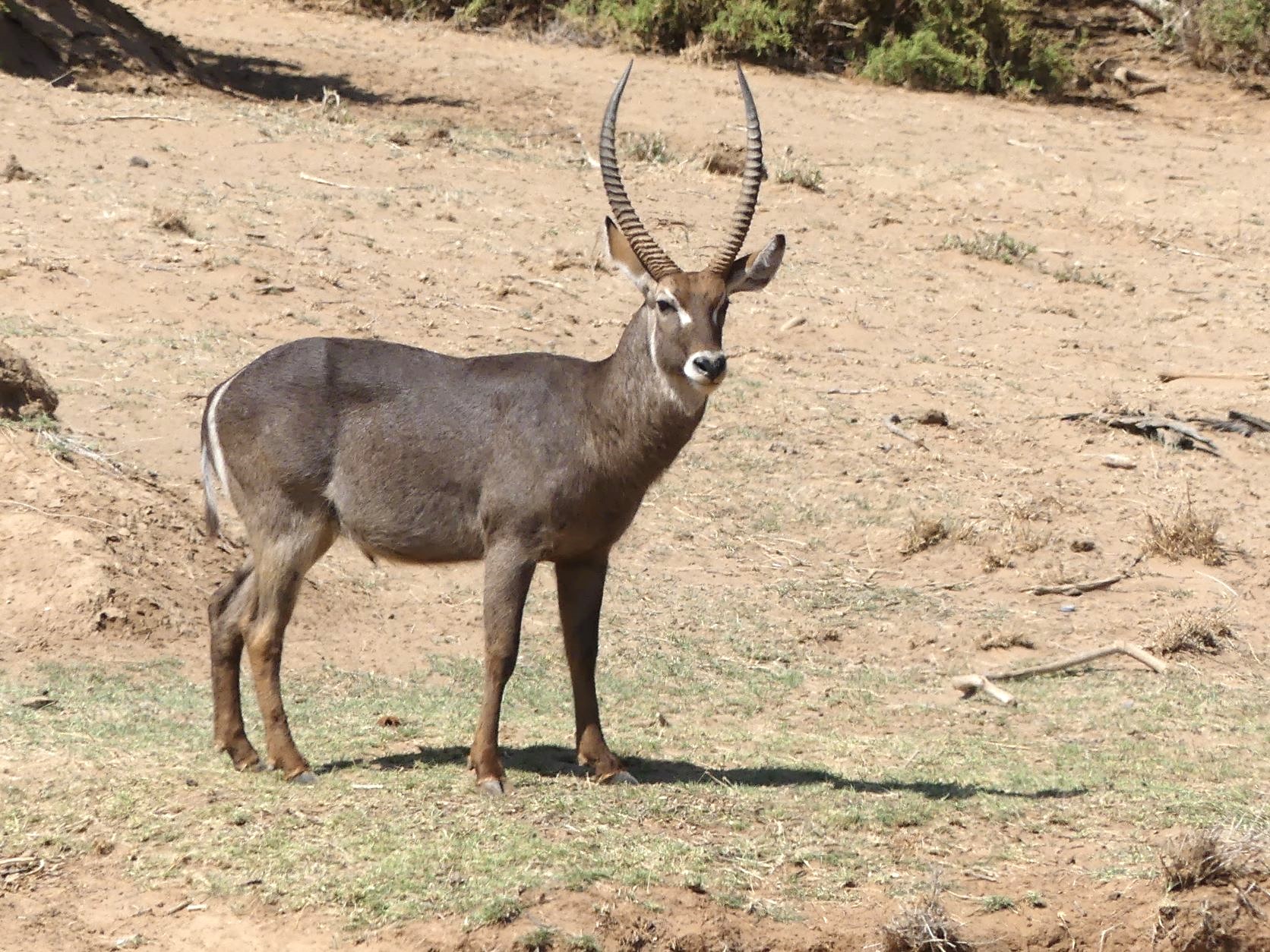
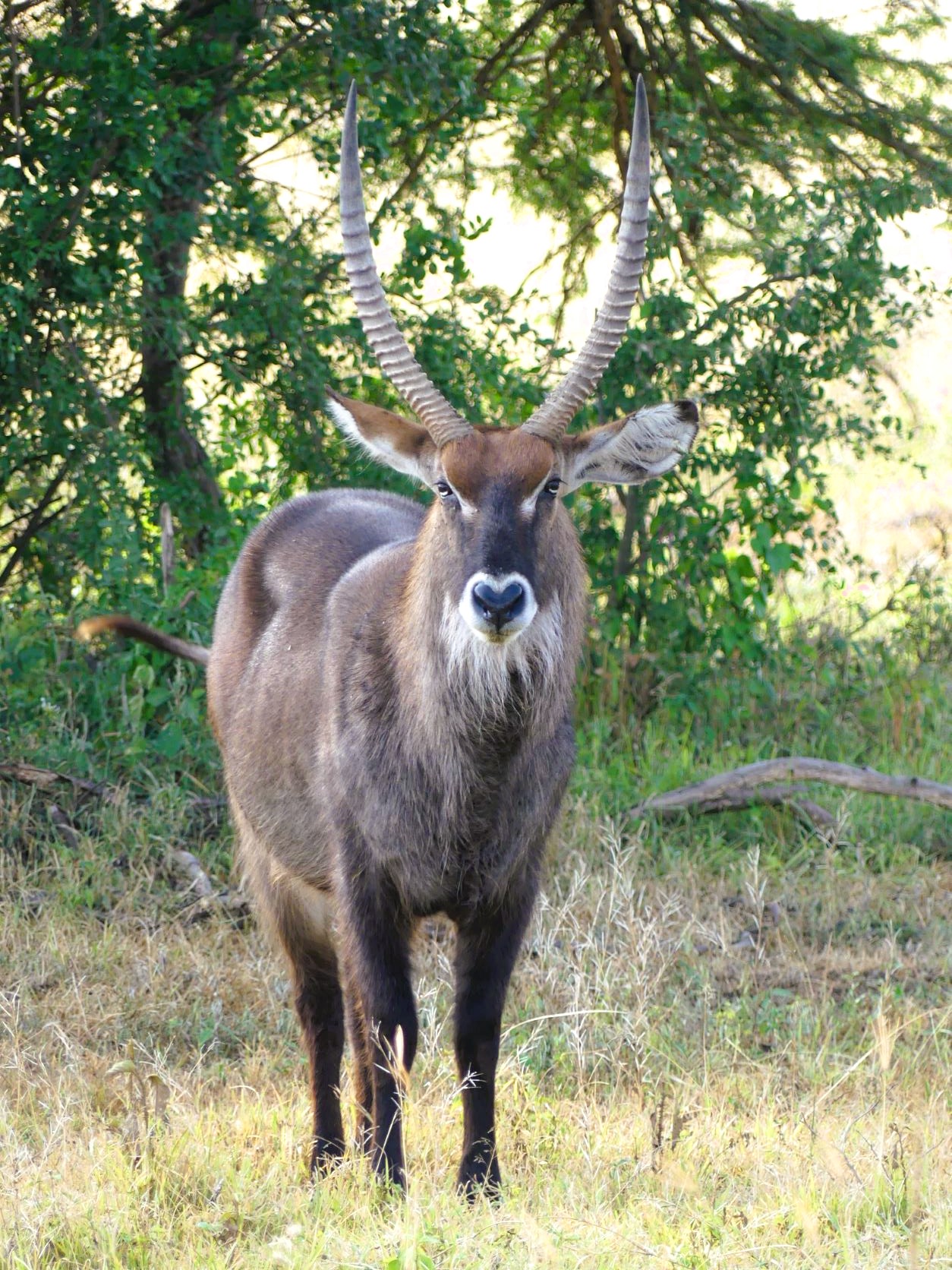
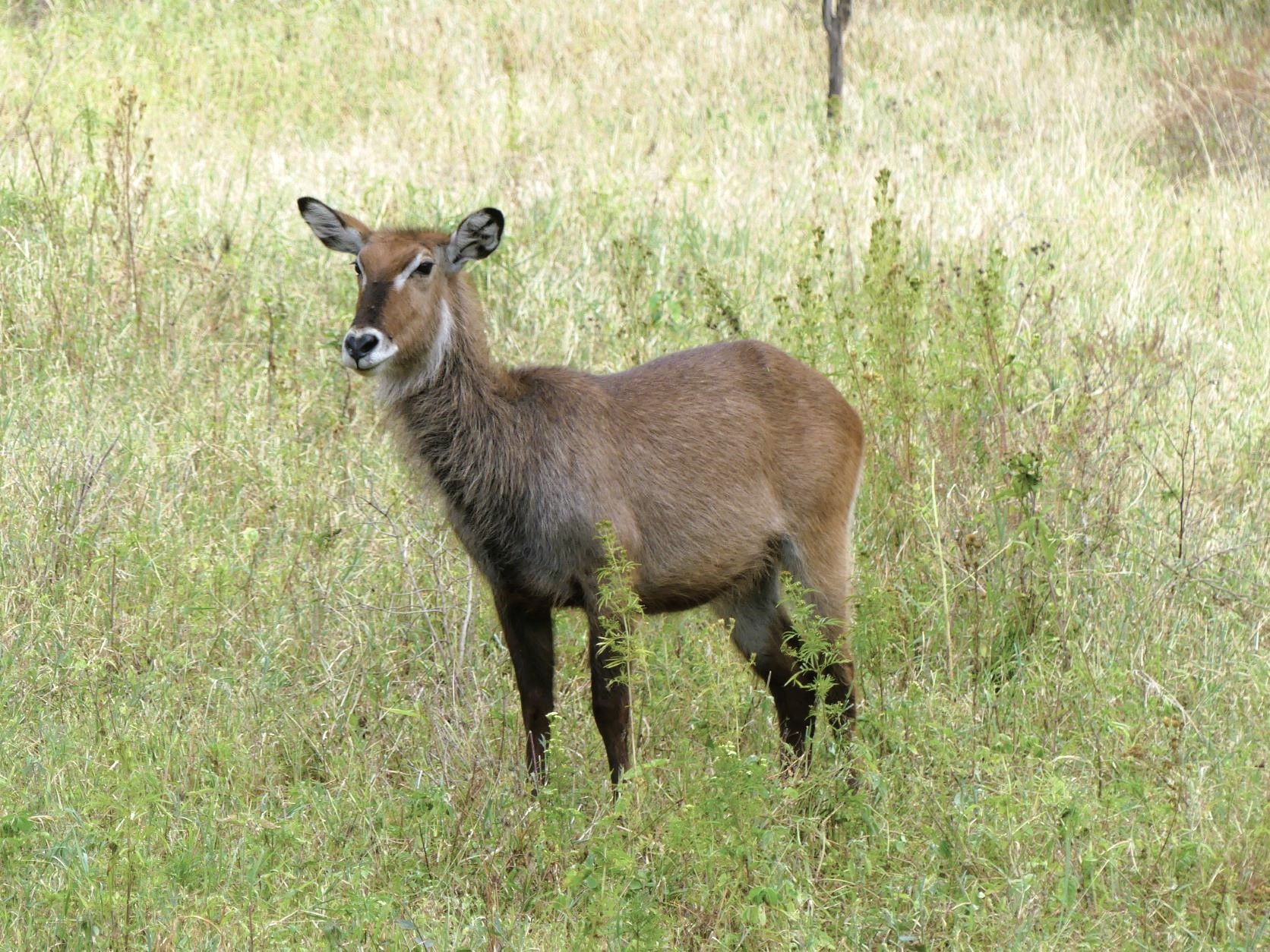
Topi, a medium sized antelope, can easily be identified with its purplish-black “jeans” patches on its thighs; they “wear blue jeans and yellow socks.”

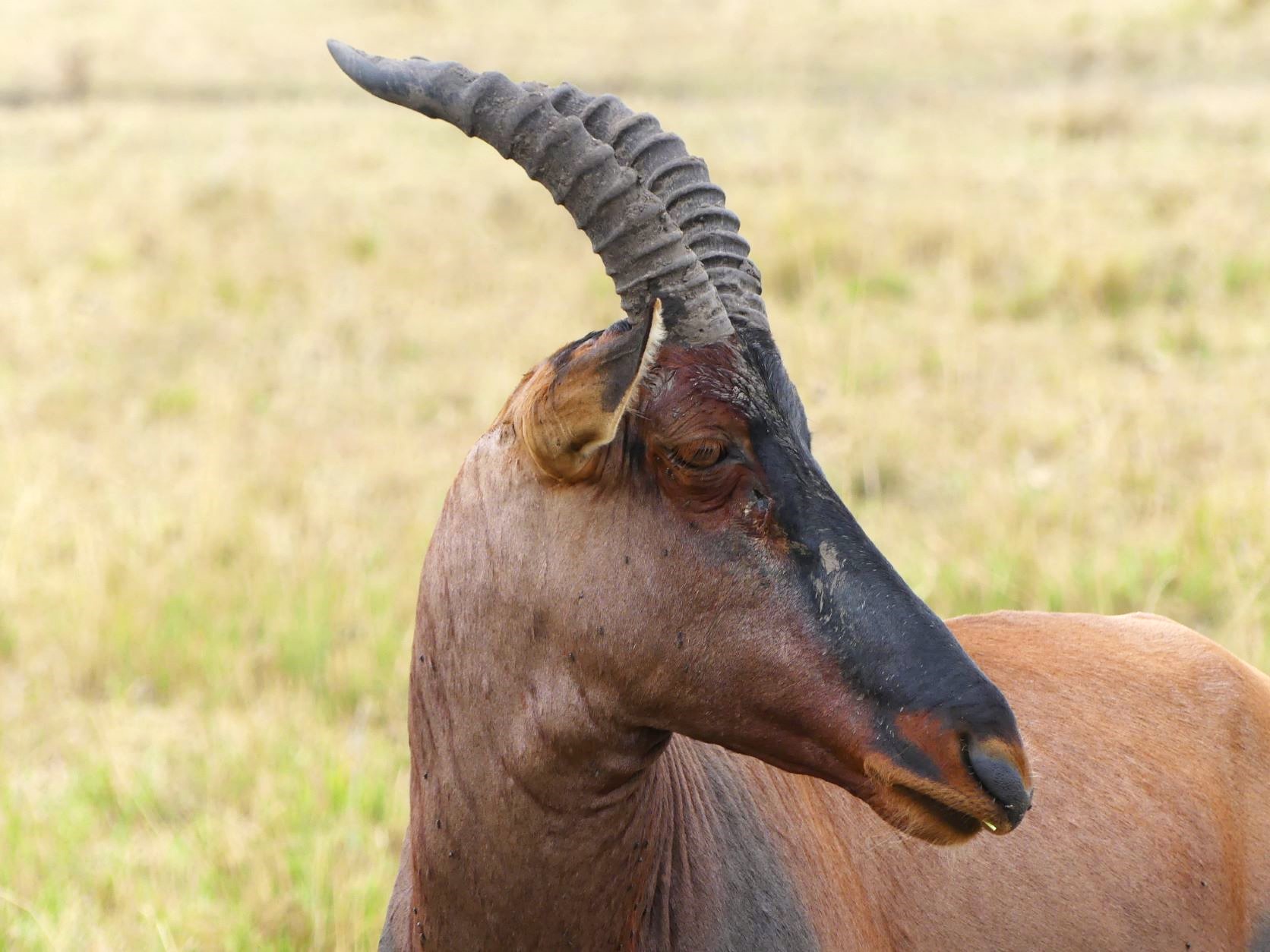
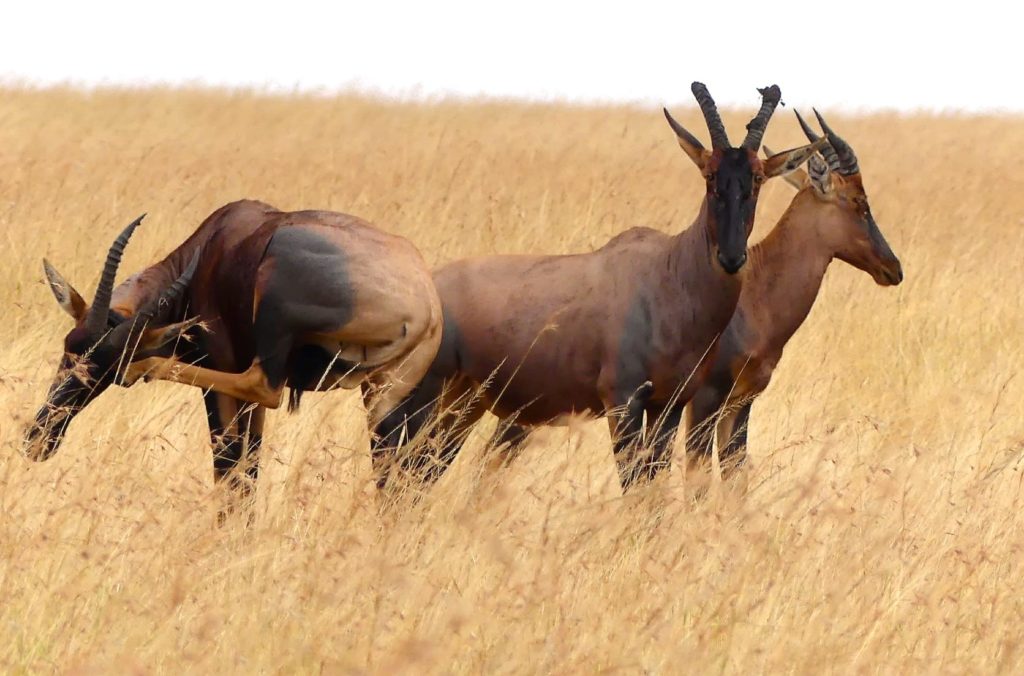
Oryx is known as the “spear antelope.” It’s large and powerfully built, with long, straight and slender, spear-like horns. They have a distinct pattern of black markings that contrast with their white face and fawn-colored body.
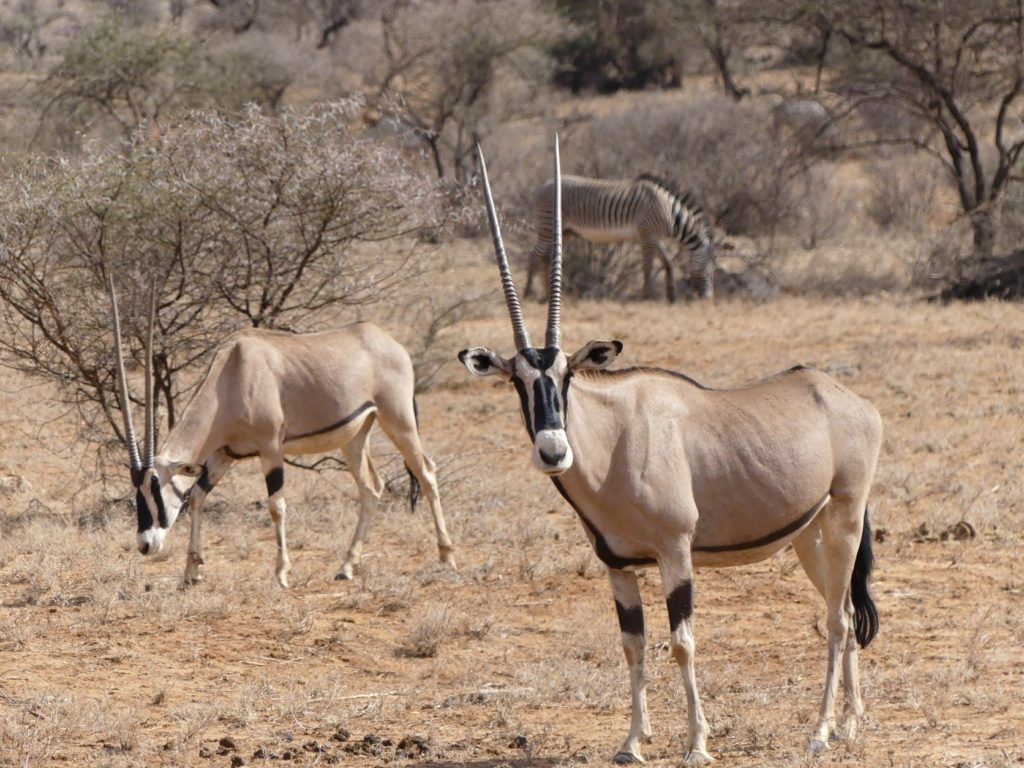
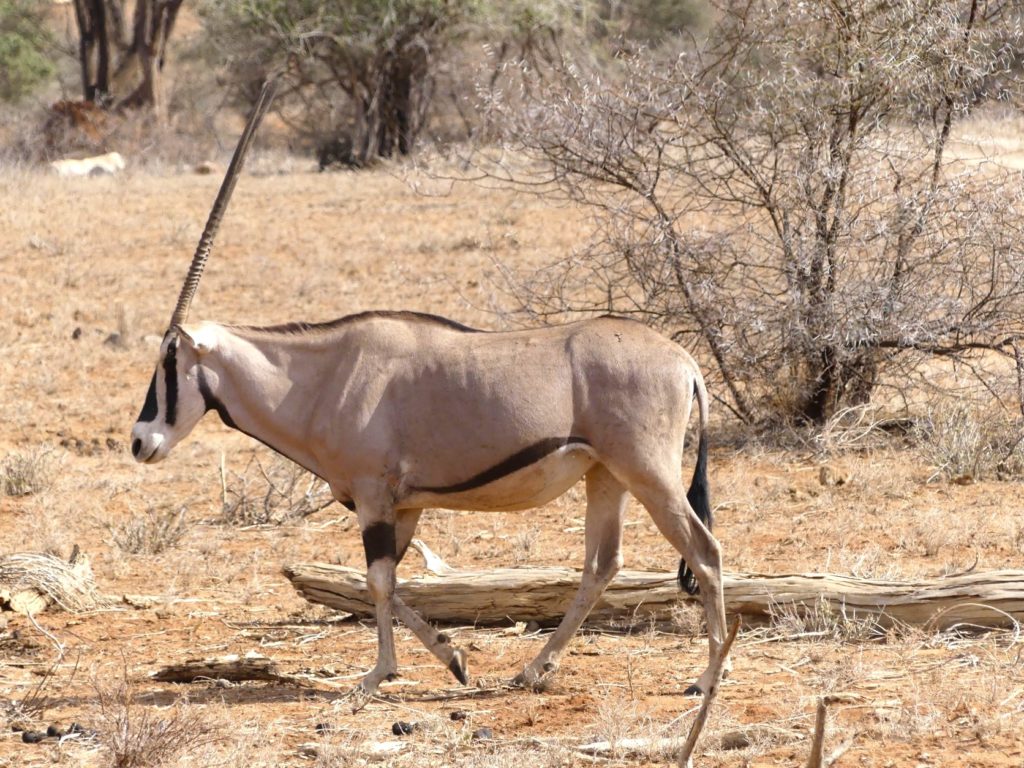
IMPALAS!
The Impala was the most prevalent of all antelopes. Their distinctive striped butts could easily be identified with their “McDonald’s M” insignia implanted. They’re very skittish; you’d be too if you were a favored prey.
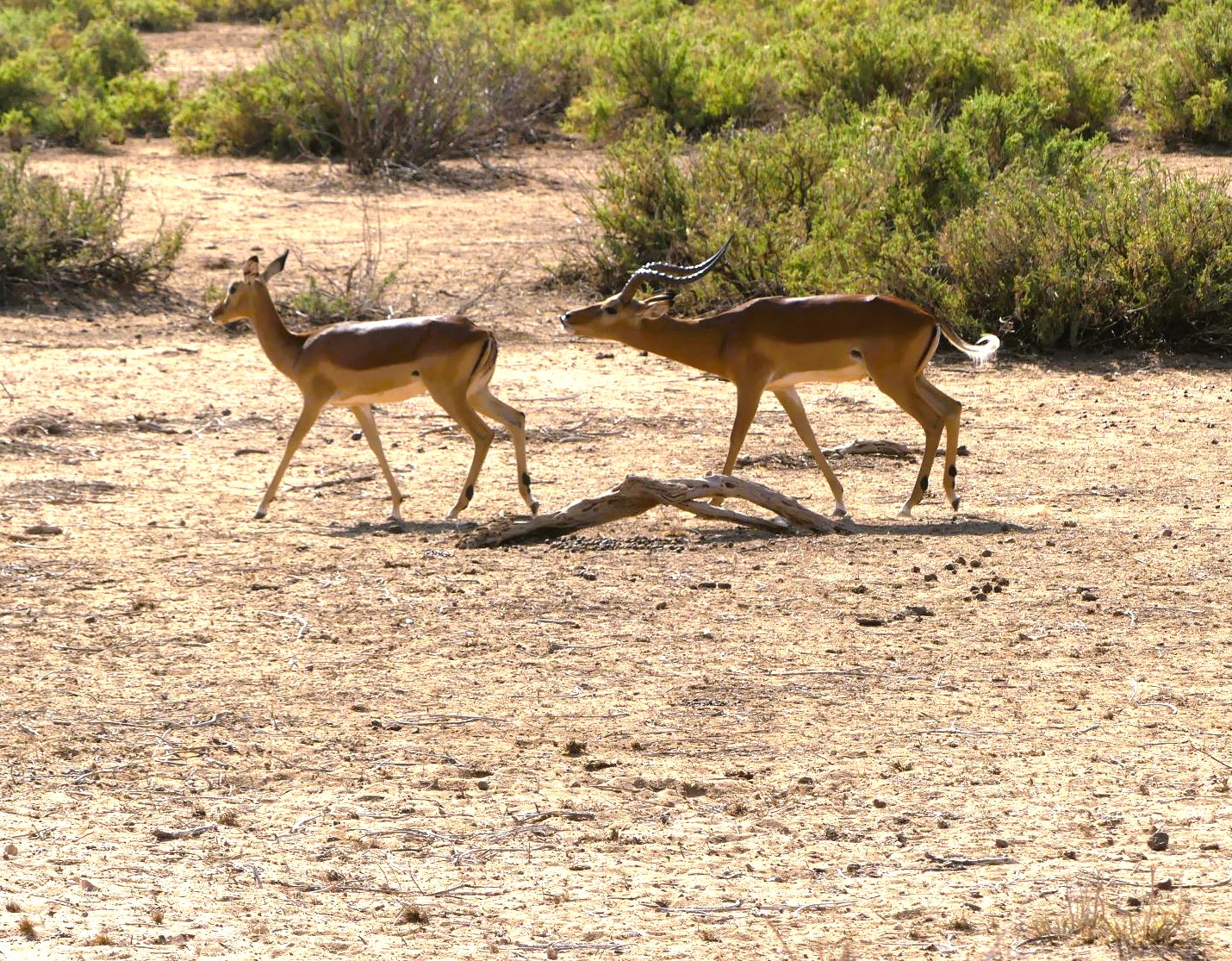
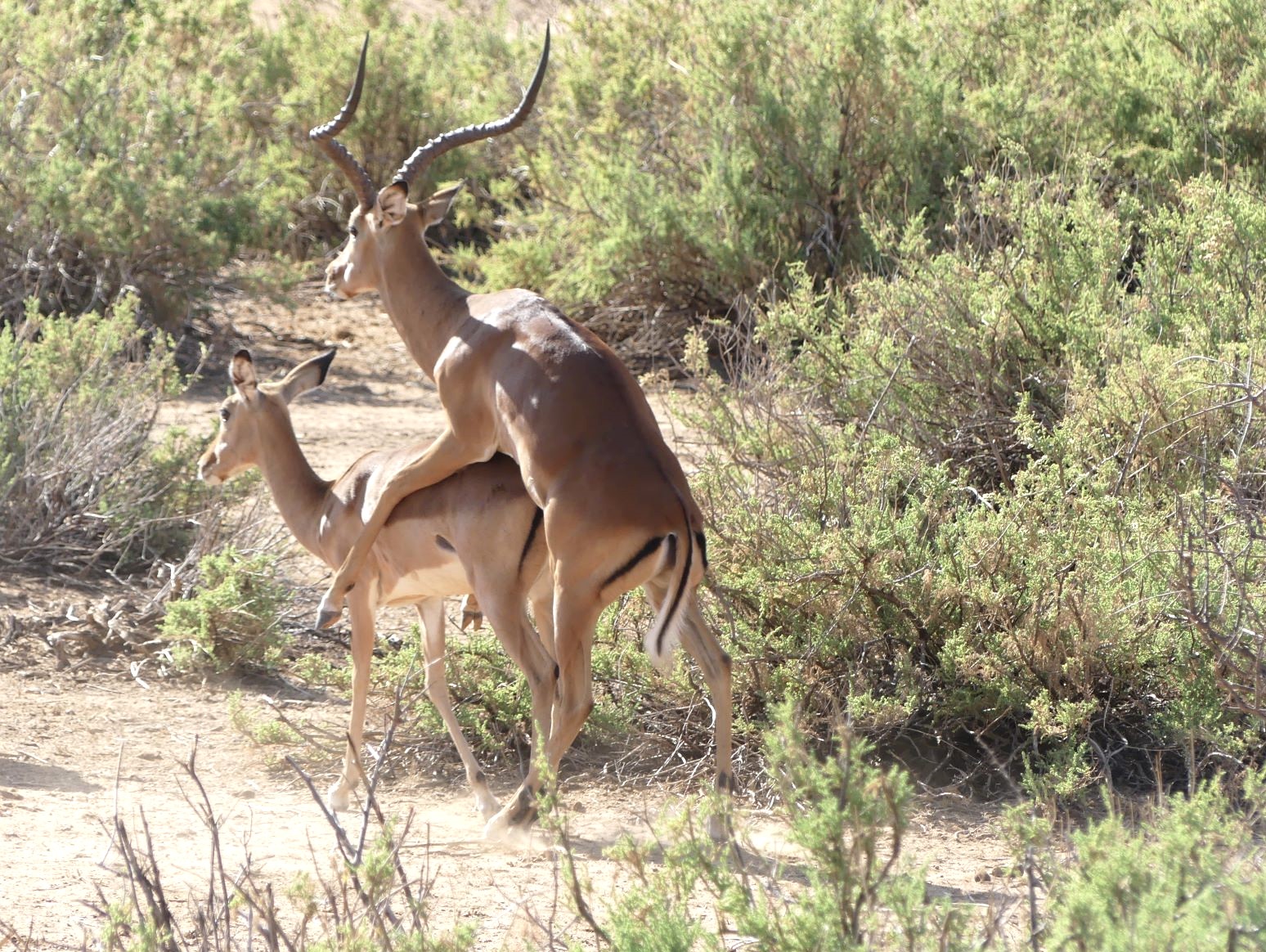
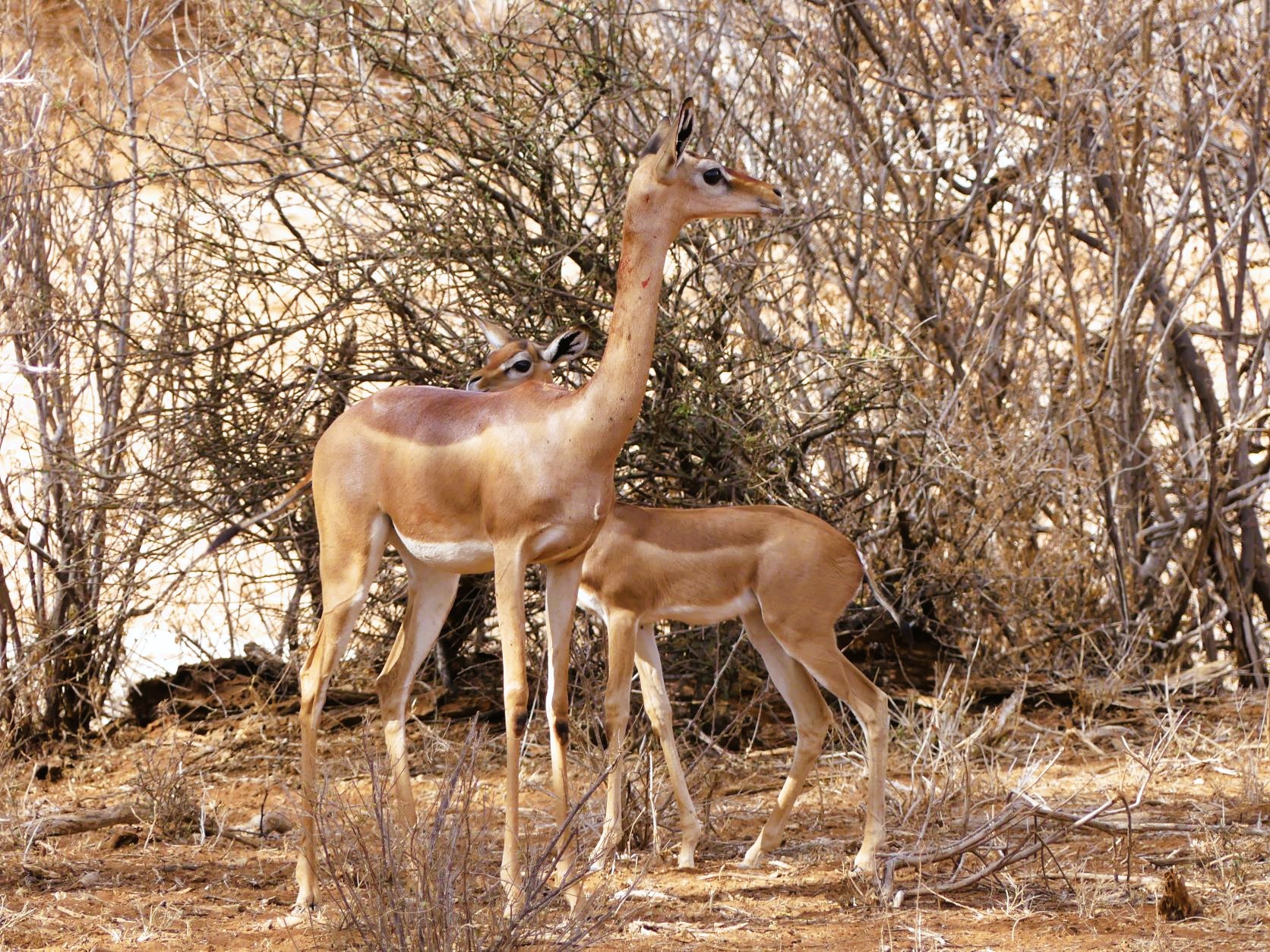
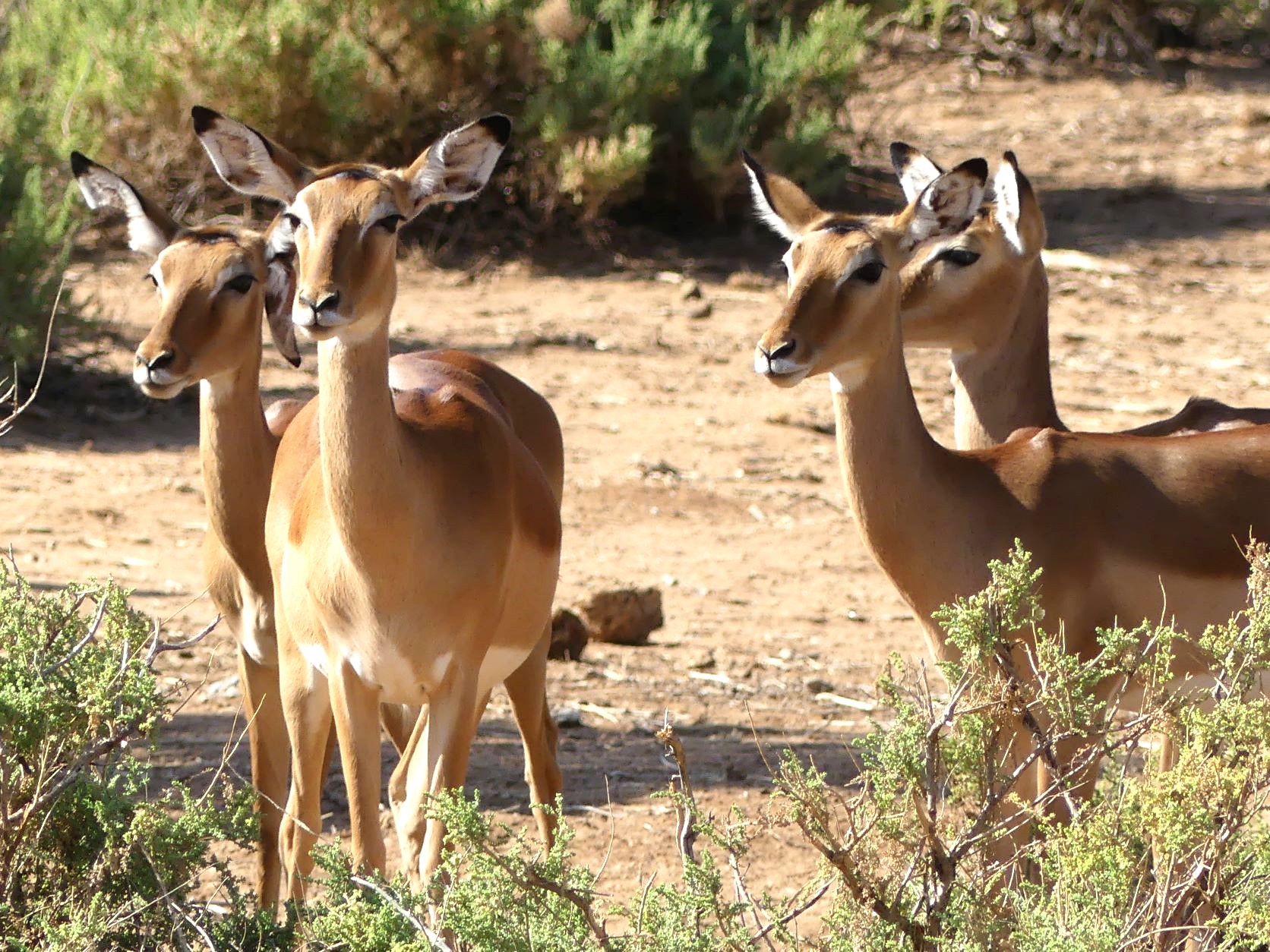
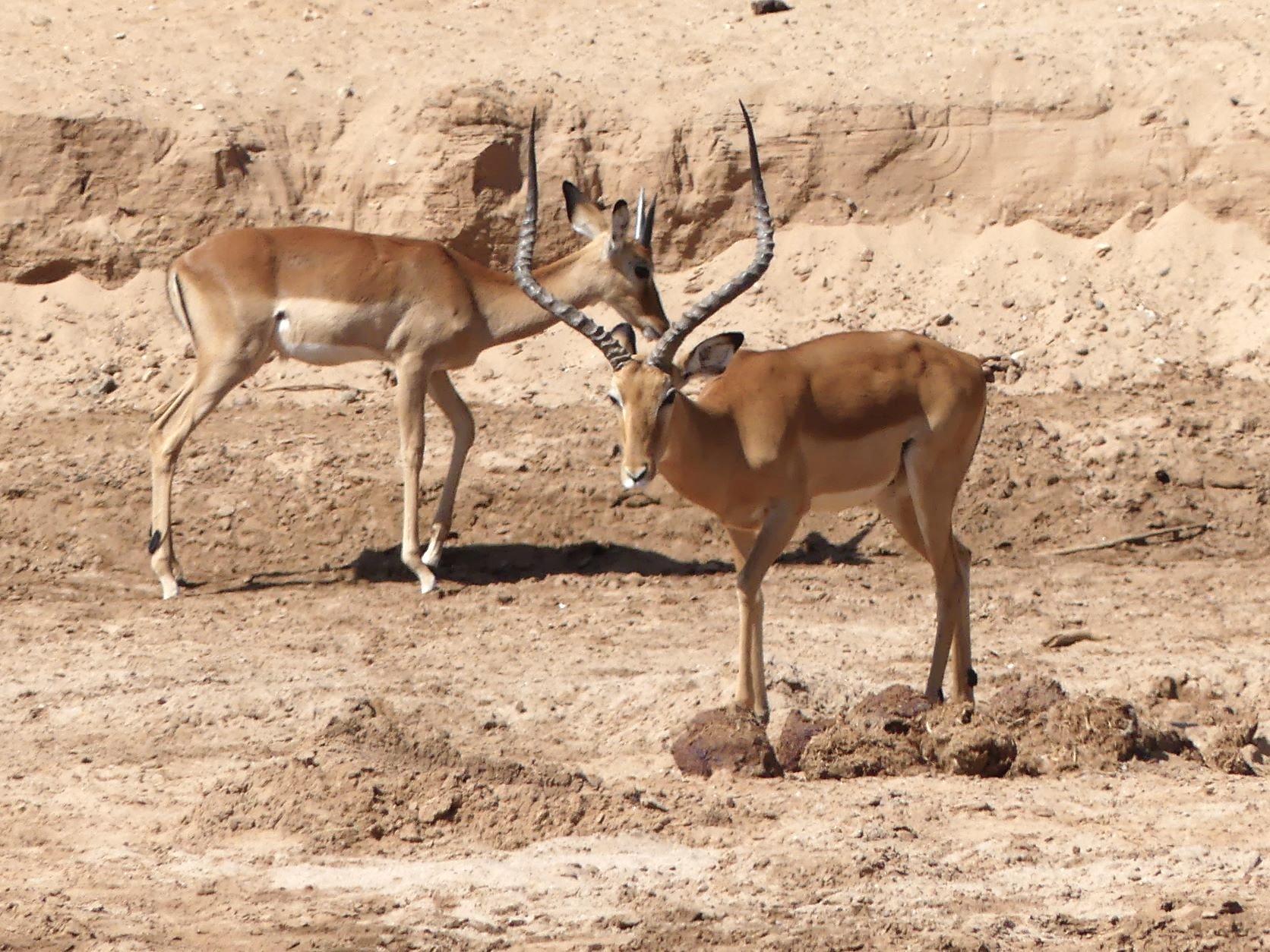
Wildebeest
The Wildebeest, aka Gnus, will gather in large numbers called a “confusion” – so named because of the noise and disorientation during their Great Migration. These large antelopes are continually on the move, seeking abundant grass and water. Every year, over a million will make an enormous migratory loop of 500 – 1,000 miles after the seasonal rains.
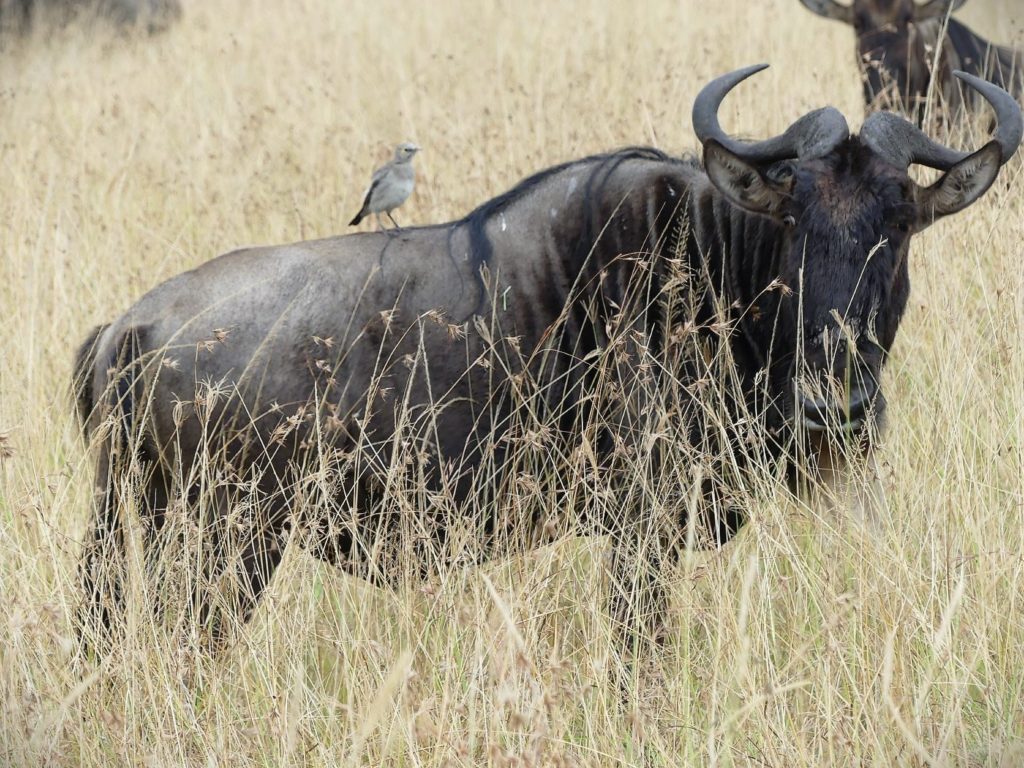
Dik-dik
We were all enamored of the utterly cute and adorable, Dik-dik, in the tiny antelope category, and most always seen in pairs – coupled for life. They were so prevalent, especially in the early mornings, when they’d be easily spotted outside our rooms and alongside roads. “Look! Over there. With a Dik-dik here, and a Dik-dik there …” became our silly song.


Their beautiful, large, dark “doe eyes” are surrounded by a white ring. And while their eyes are stunning, they provide more than just sight. Special glands appear as a black spot below the inside corner of each eye. These glands produce a dark, sticky secretion used to scent-mark their territories.

They’re an amazing little antelope and always captivated us whenever/wherever spotted.
TREES!
A moment to give a nod to trees and their important role in the planet’s ecosystem and helping to sustain the animal kingdom. Though sometimes sparse on the savannah, wherever a tree stands, it provides life and much more. Here, a few African trees.

Barbara Walters’ famous improvised query, “If you were a tree, what kind of tree would you be?” For me, it’s an Acacia. The iconic acacia with its wide, umbrella green canopy.
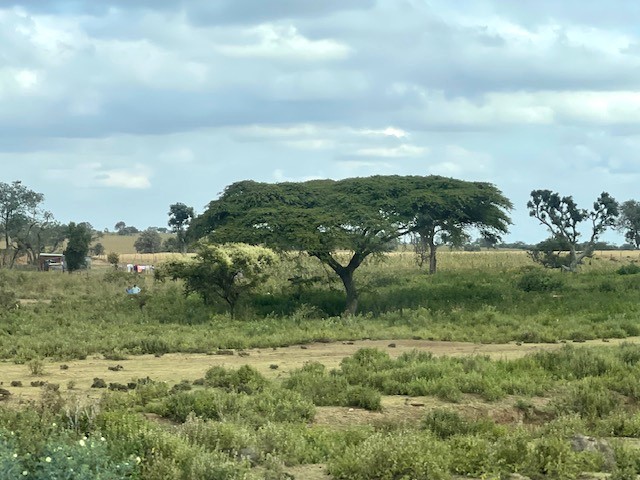
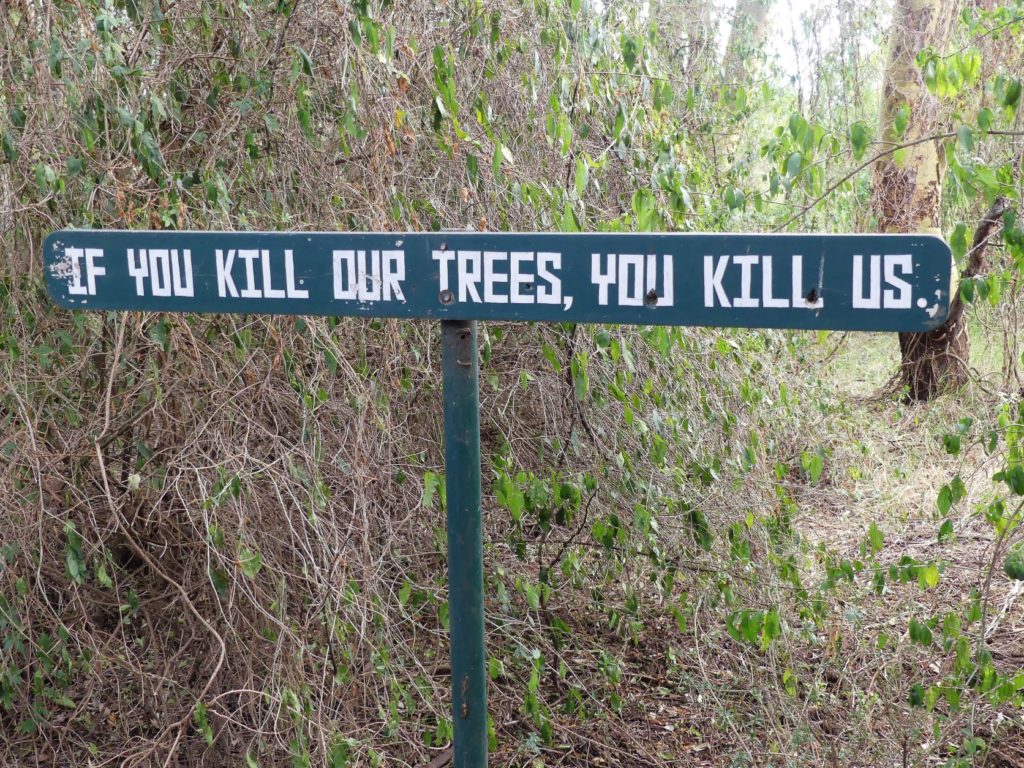


Asante sana – thank you very much for tagging along with me on my Kenya Africa Safari, and enjoying the adventure with me through photos and blurbs. There were so many great memories made along the way. The Kenyan people were kind and welcoming, and everywhere we went, big smiles would greet us. I’ll always remember “Jambo!” and “Karibu!“
And kudos to all the incredible “Safarians” that Steve gathered together to experience a once-in-a-lifetime journey. Dianne and Sheridan gave me their wonderful companionship that I’ll always cherish. And, of course, Steve, a wonderful roomie and best tour guide there is, in putting it all together and always keeping it real … cool, calm, and collected. Namaste.

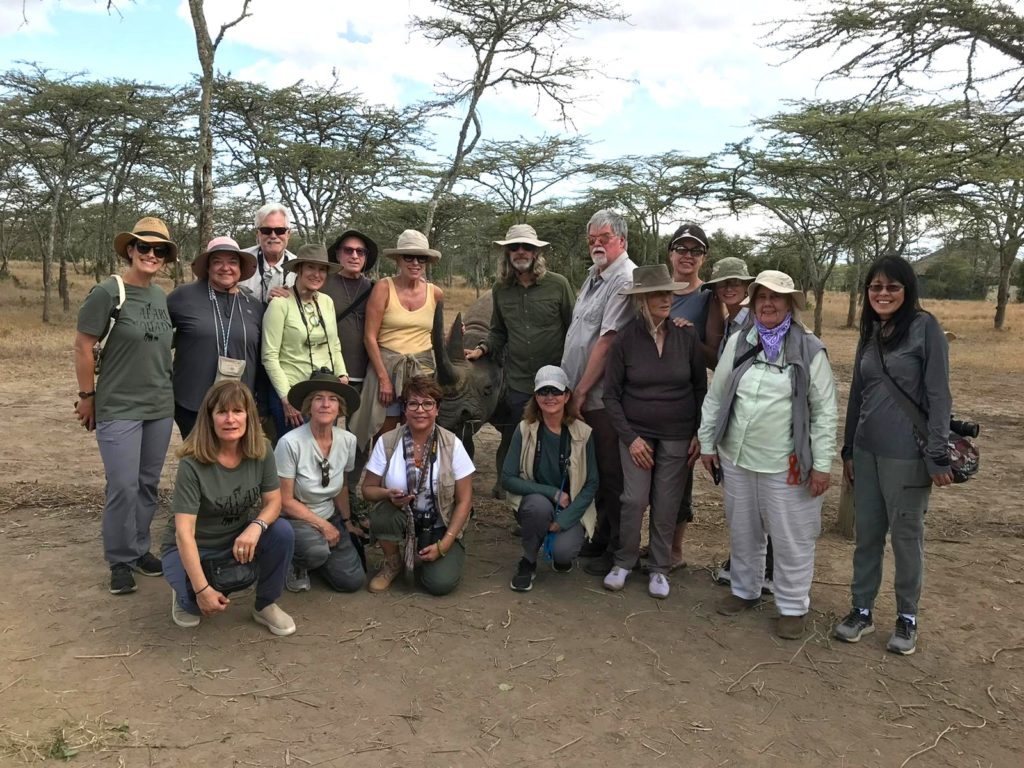
We’re receiving glowing monthly updates on Taabu, our adopted baby elephant. The latest news is that Taabu, is always so welcoming and gentle with his fellow orphans. He’s especially playful with Mukutan, his sparring partner. “The boys spend many afternoons together, finding each other in the forest at different points and picking up their wrestling match where they left off.” Spirited and spunky elephant, just like his Uncles!
Most importantly, I’d like to give Sergio my most appreciative, loving and grateful acknowledgement in pushing me, once again, in leaving my comfort zone and giving me this most incredible gift that is Africa.
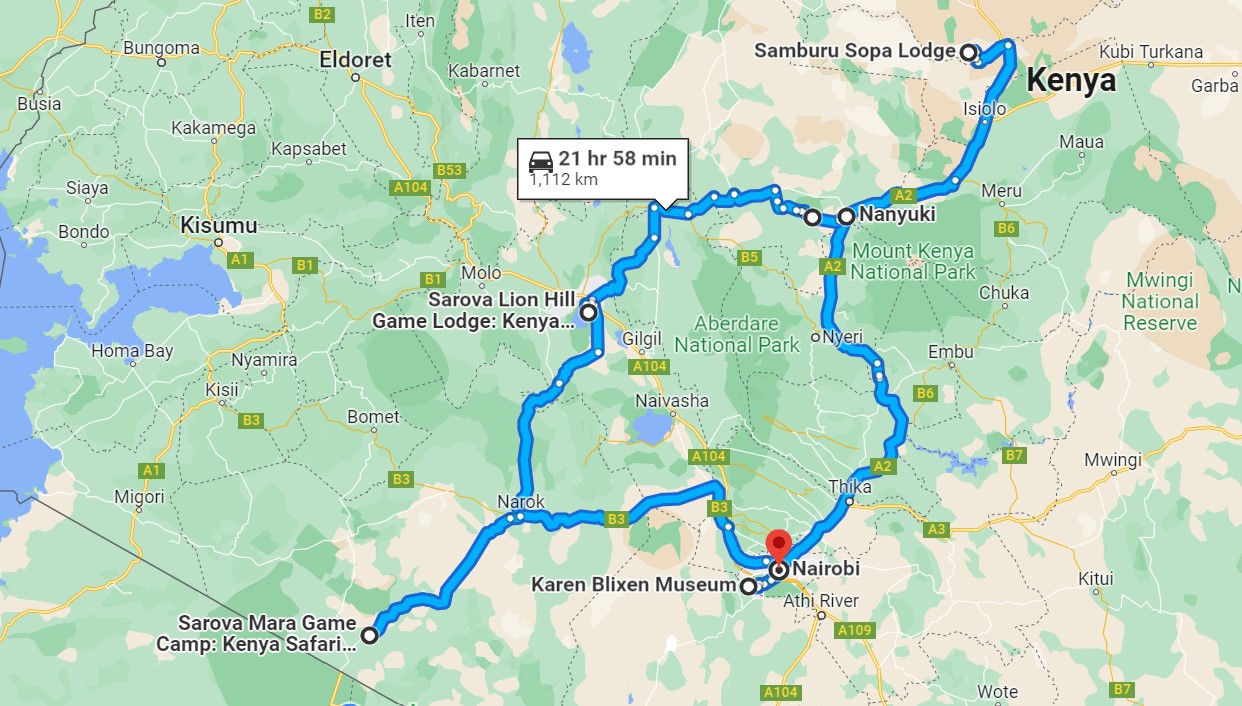

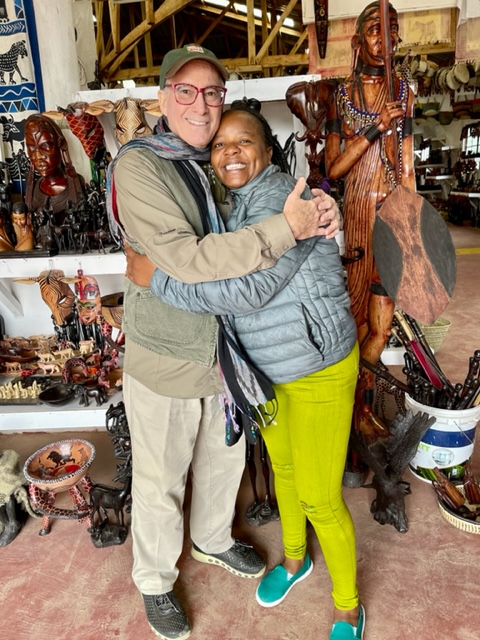
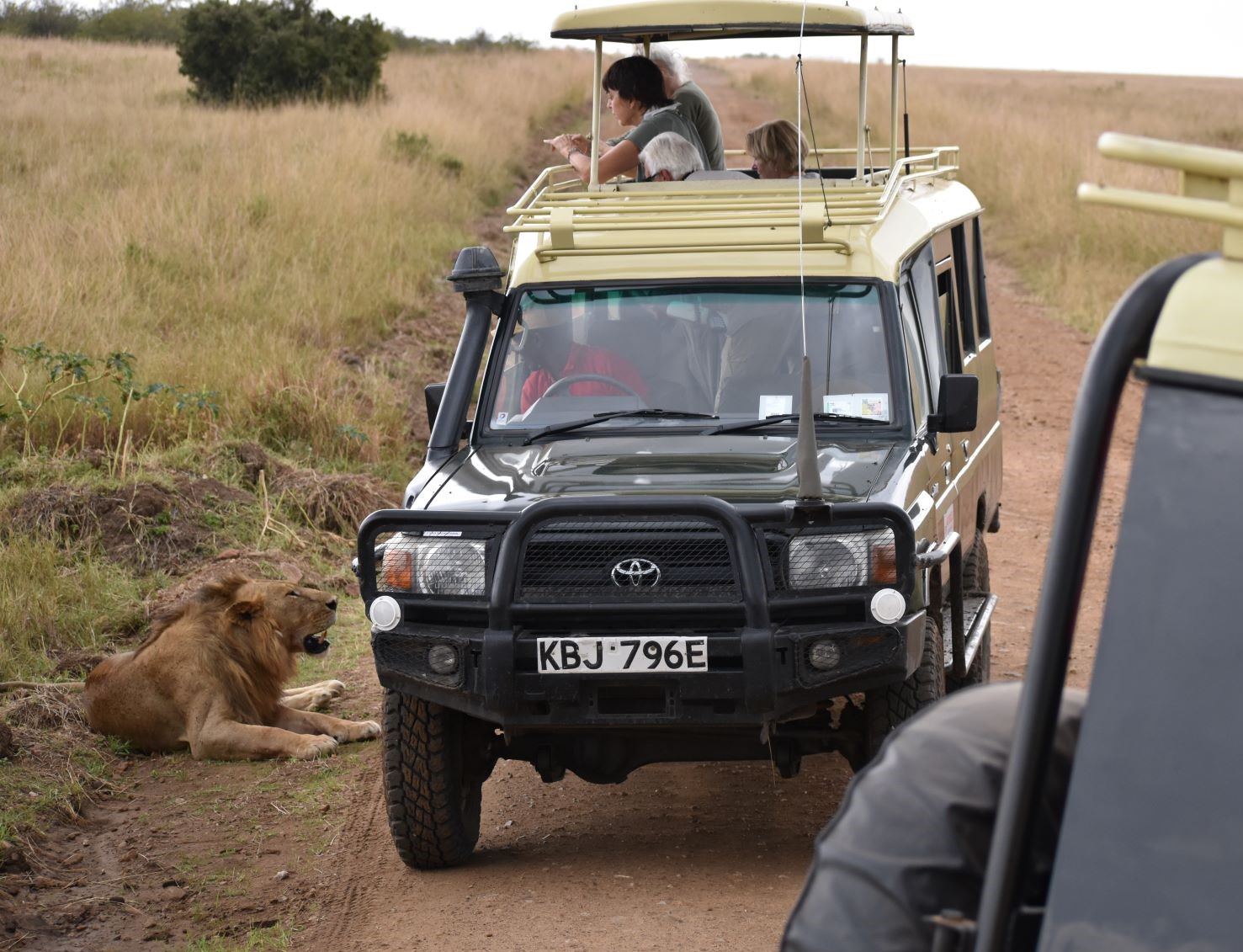
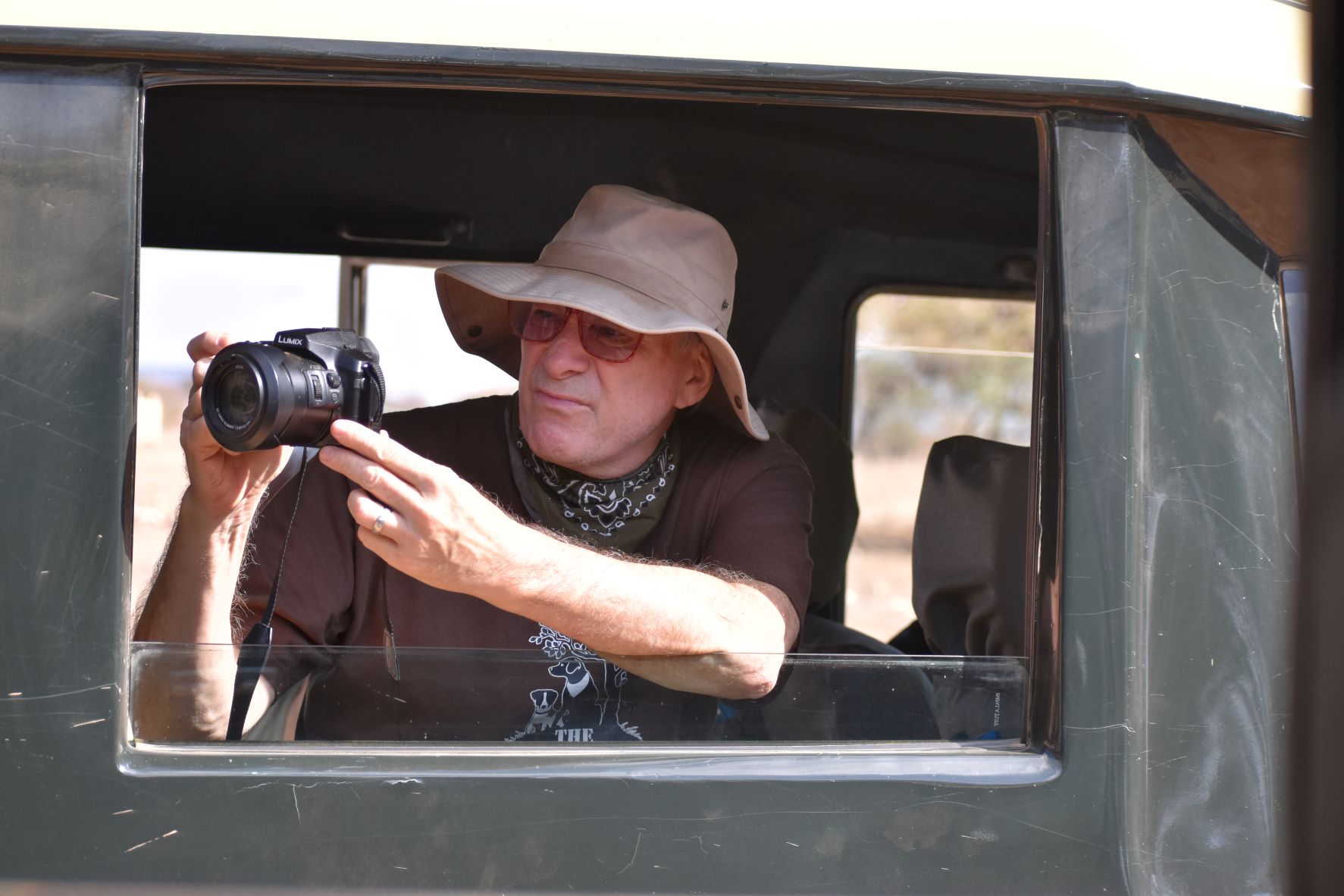
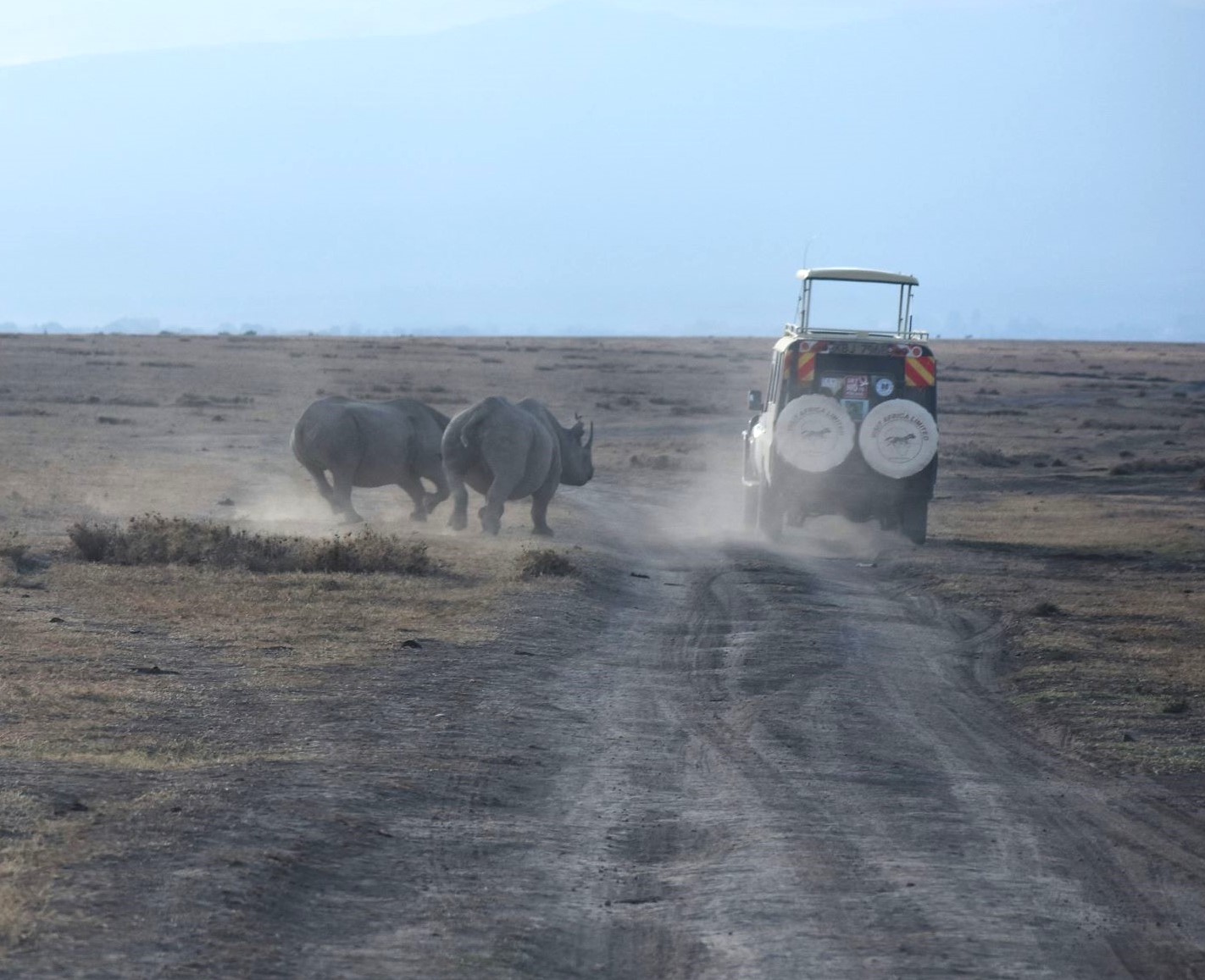

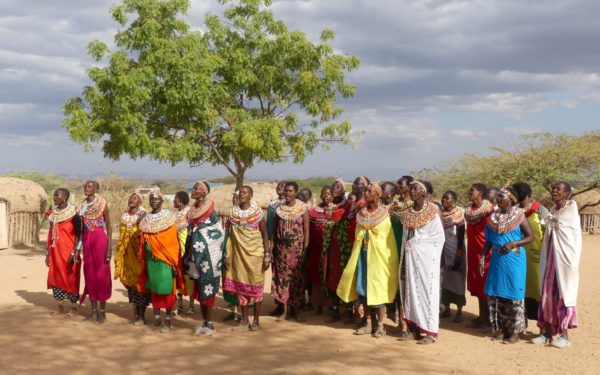
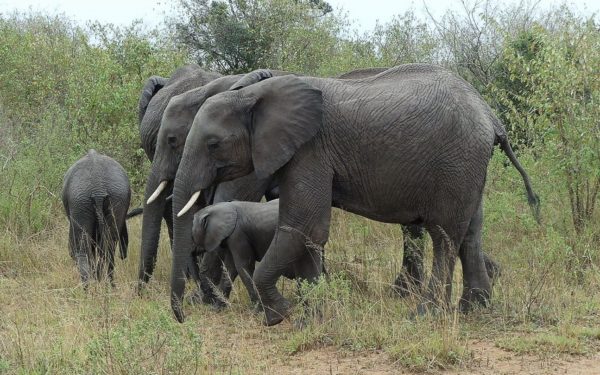
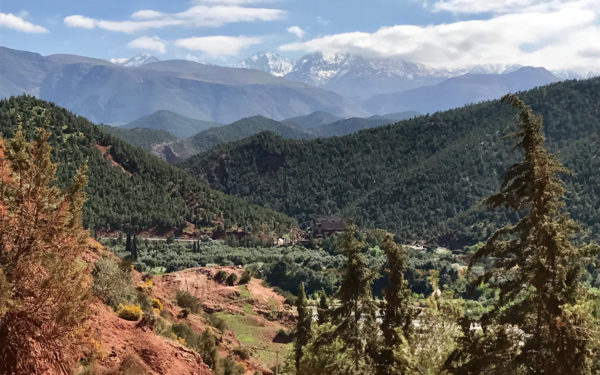
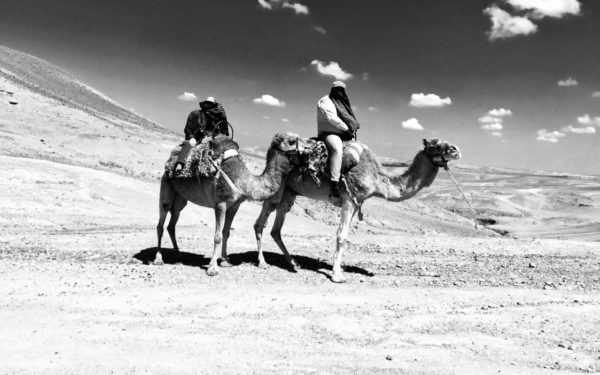
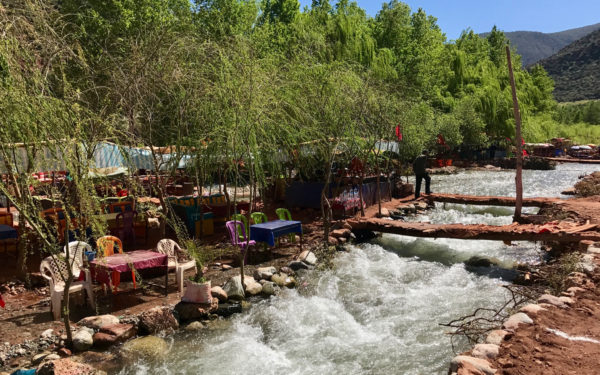
Fabulous photos, David. The one of the Giraffe is amazing. It absolutely dwarfs the water buffalo and is actually farther away from you. Seems impossible. Good pictures of you as well.
It’s amazing to see all those fabulous animals, but to get such wonderful photos too has to make this the perfect trip! Thanks for sharing 👍❣️
Thanks for sharing your wonderful photos and narrative of your Safari. I really enjoyed reading about your adventure.
How gorgeous, makes me want to go!
Did you use a travel company? If so which one or ones.
Also, I see your name & get hungry except no people food this time.
Amazing photos of your incredible journey! Awesome!
Looks like such an amazing journey ! Incredible sites and photos !
Thank you for sharing your amazing trip with beautiful photos of such amazing creatures. Your stories make the photos come to life. Such a wonderful trip!
Brings back sooo many memories!
David, your words so eloquently tell a story. Your photos always bring that story to life! Thank you for sharing such a momentous life experience.
It was a real treat to revisit Kenya through your fabulous photos! Thanks for sharing!
Gorgeous pictures! Thank you so much for sharing your experiences in this magical part of the world.
truly a magical journey- your photographs are nothing short of spectacular- thank you for taking and making the effort to share- i need a bit of joy right about now!